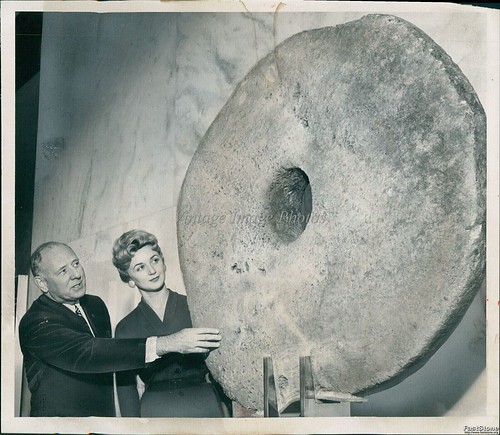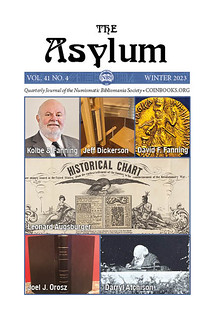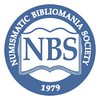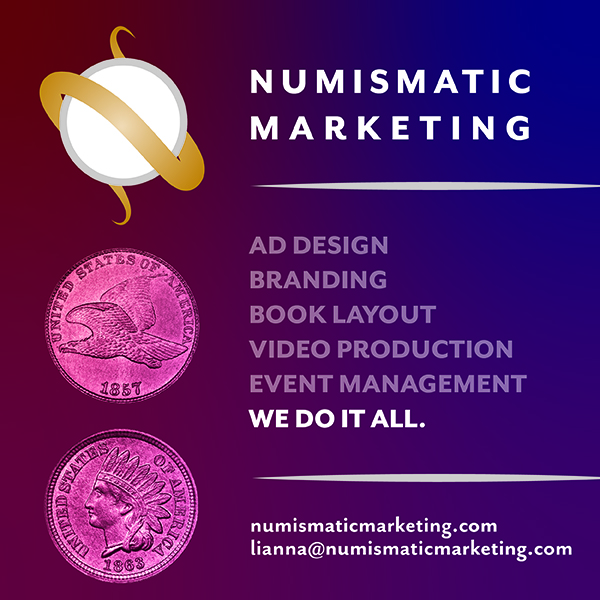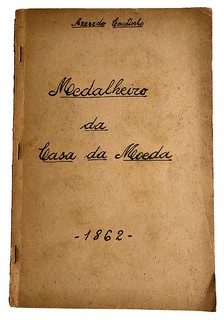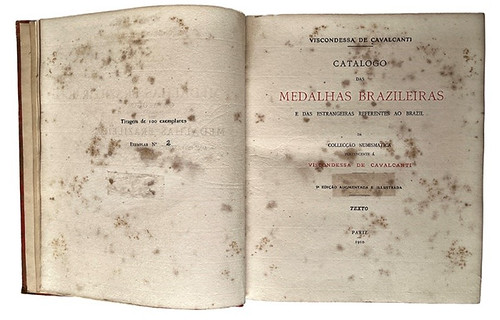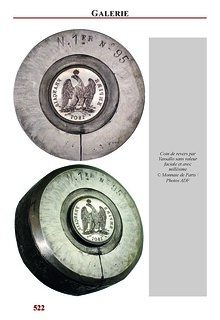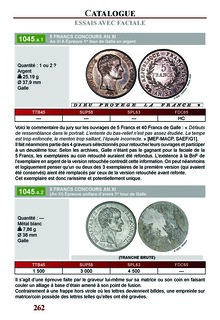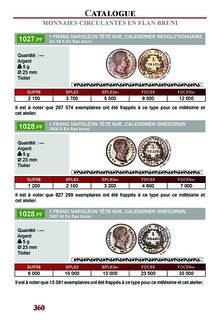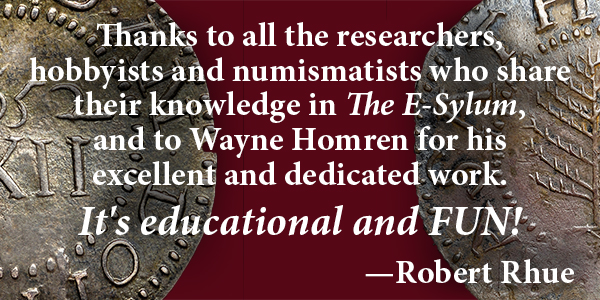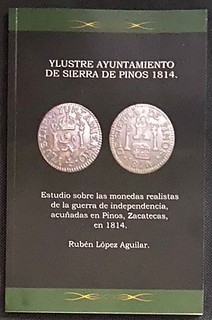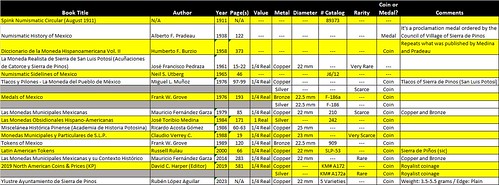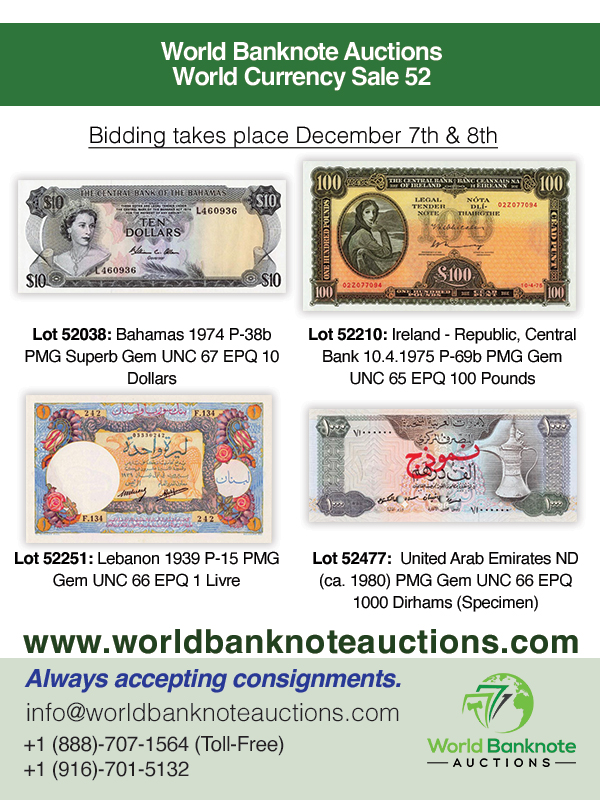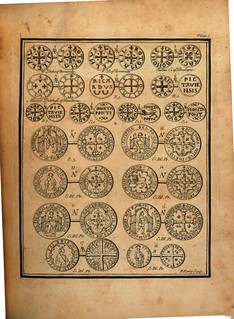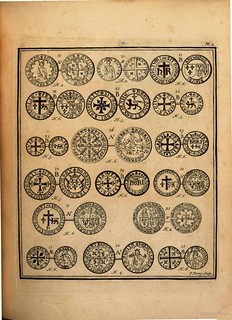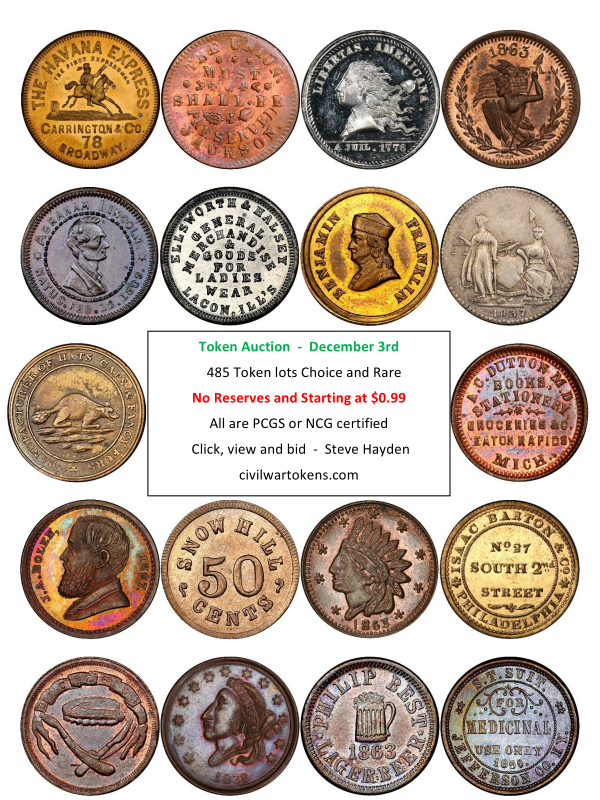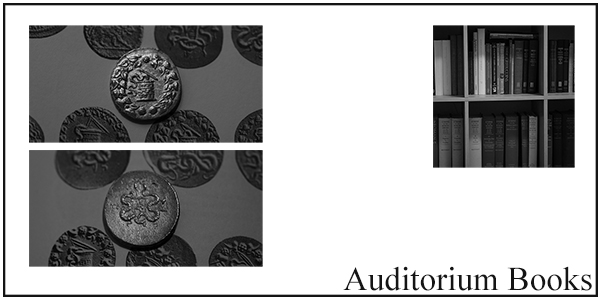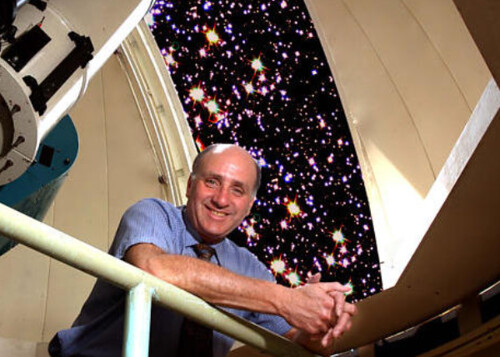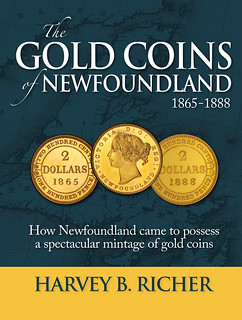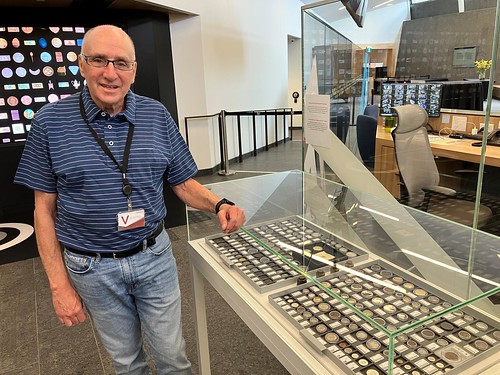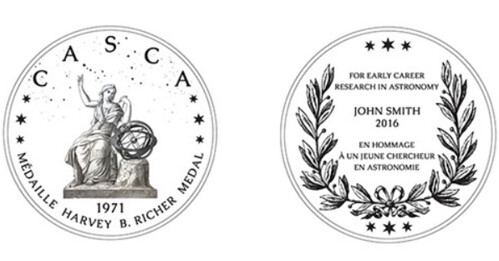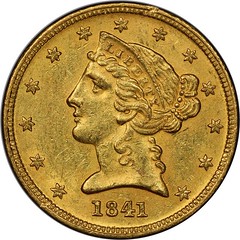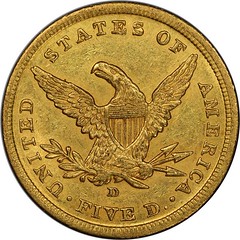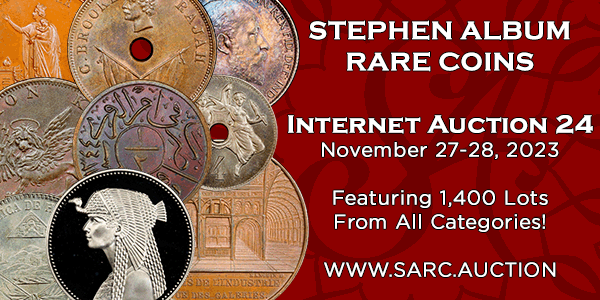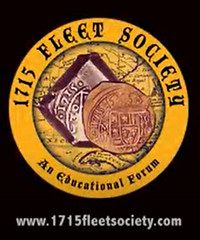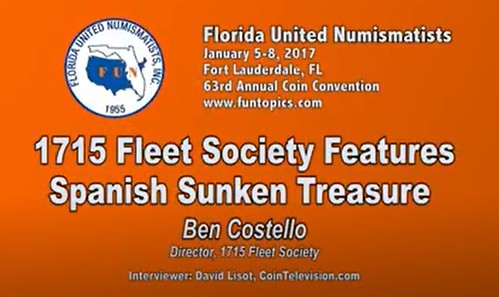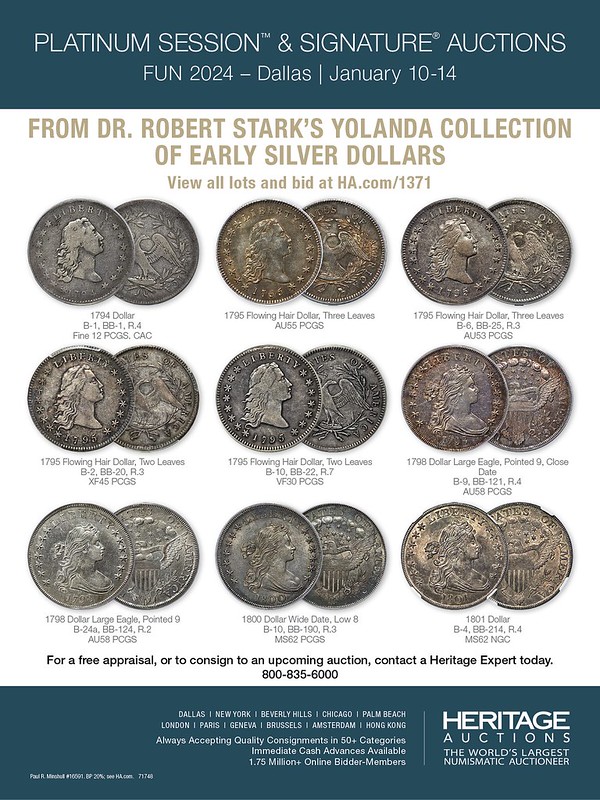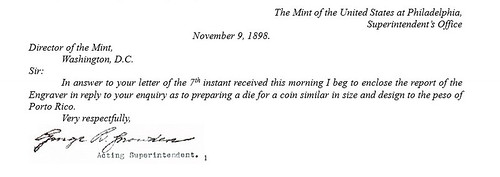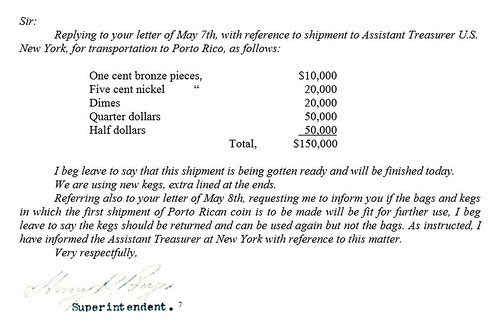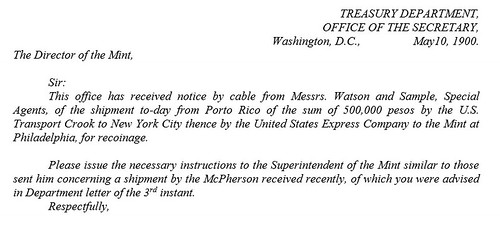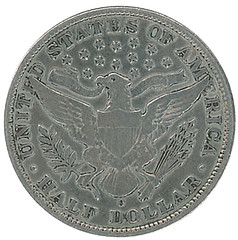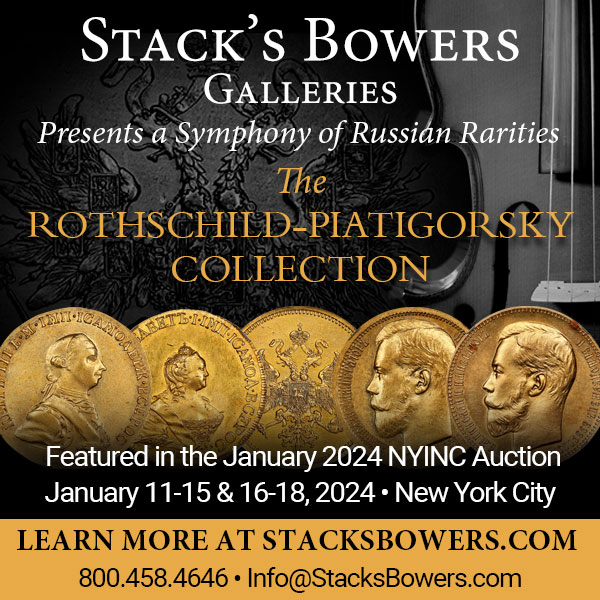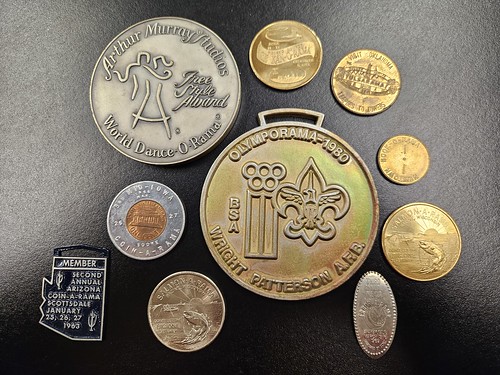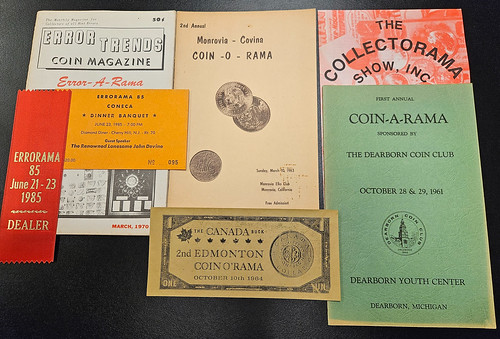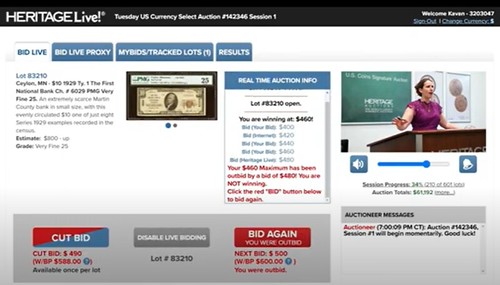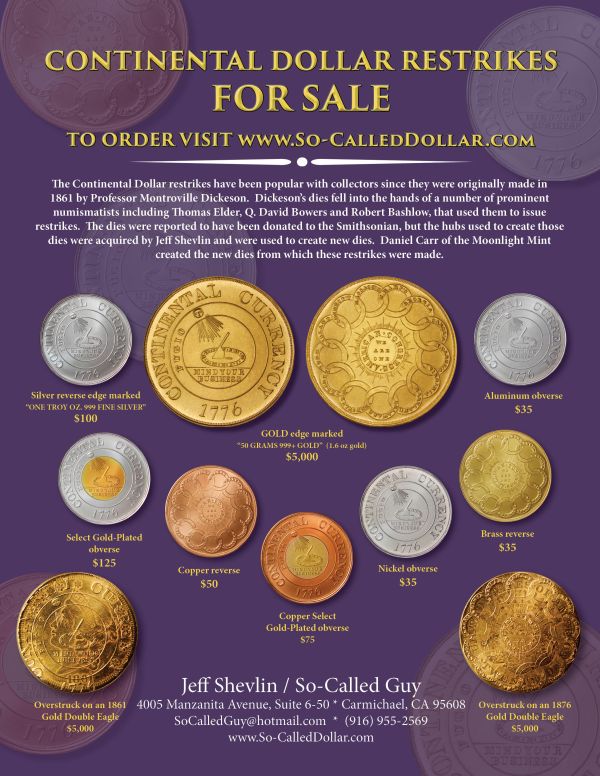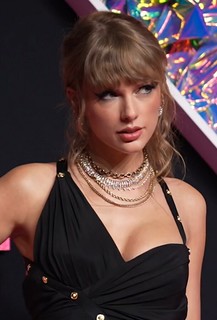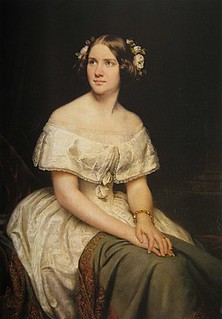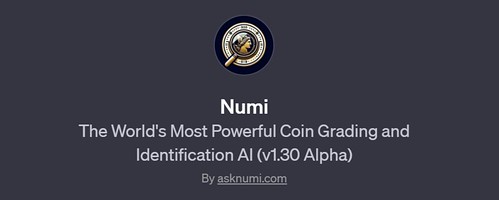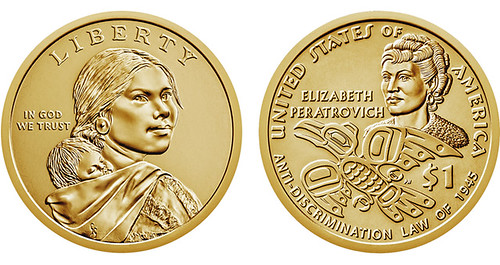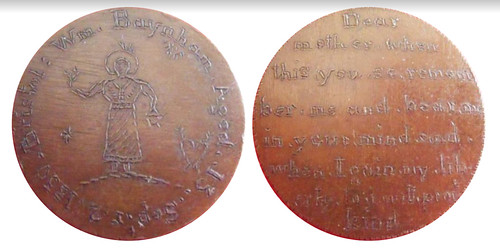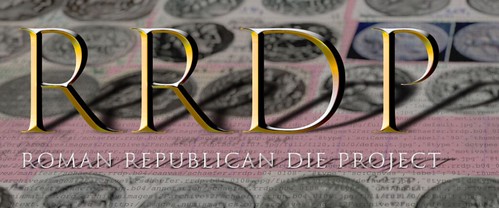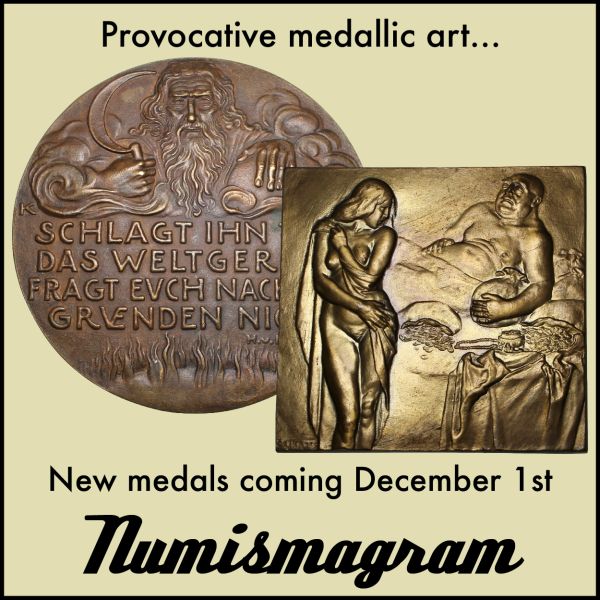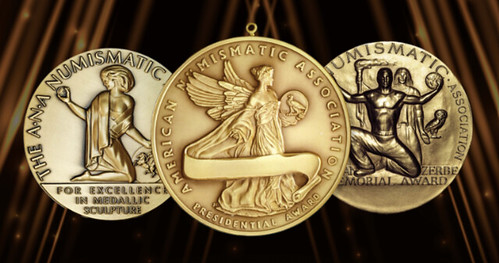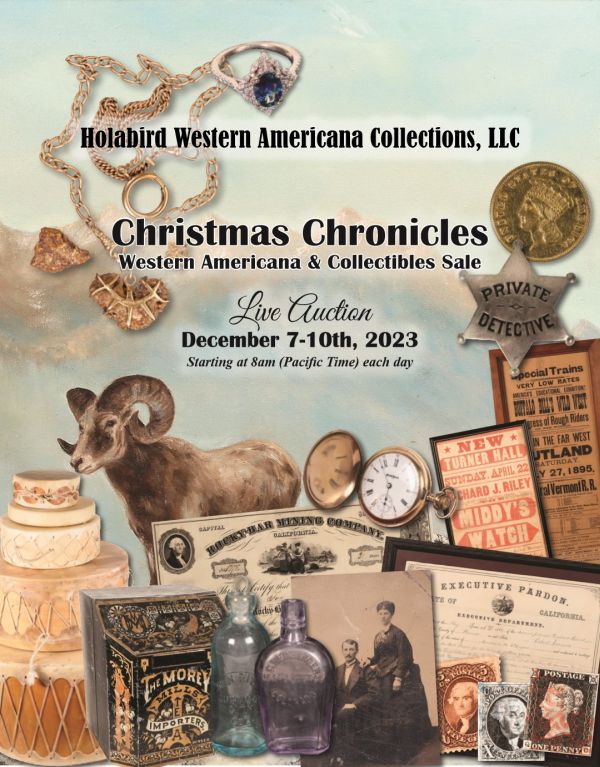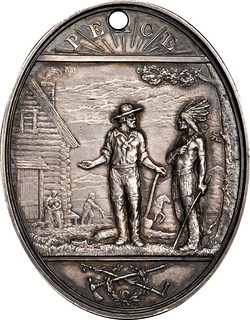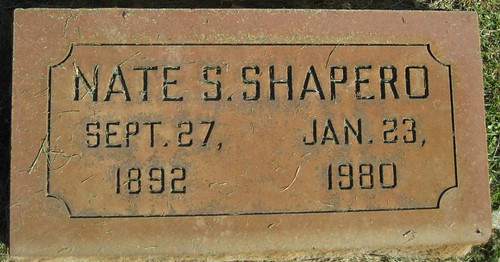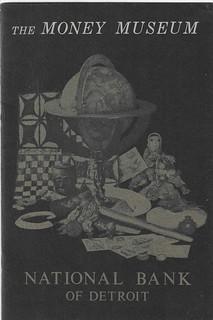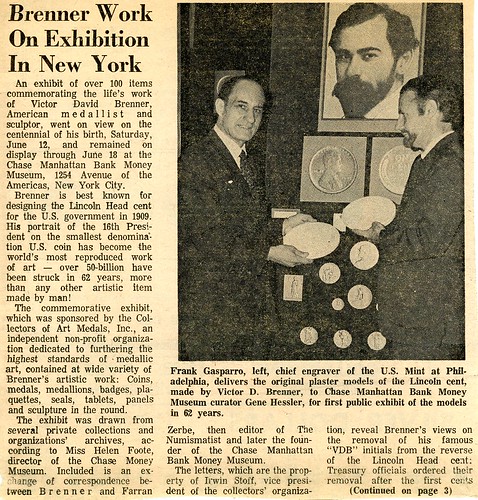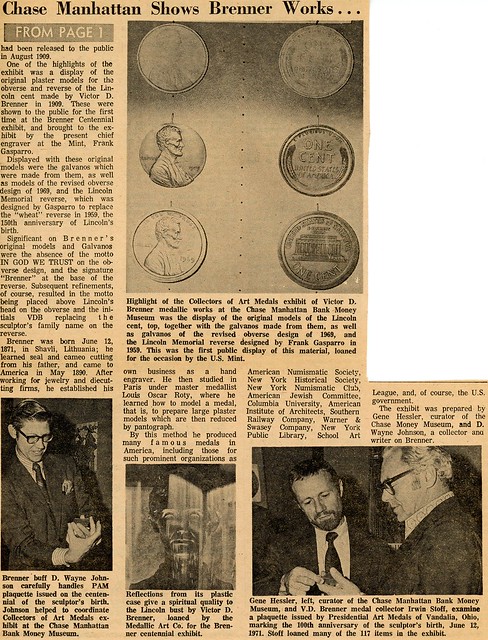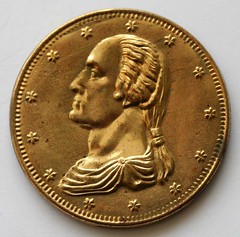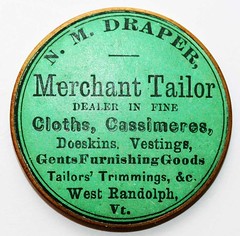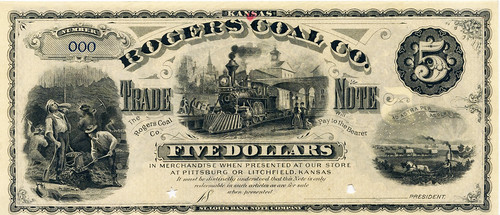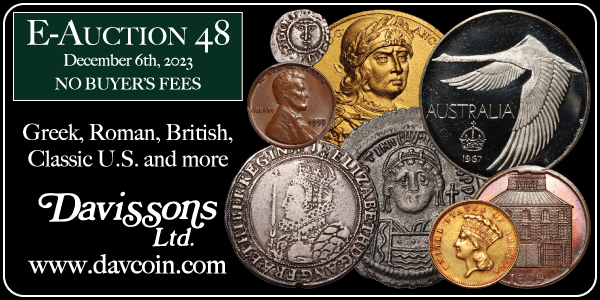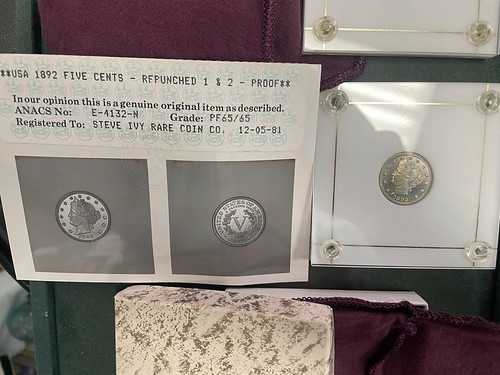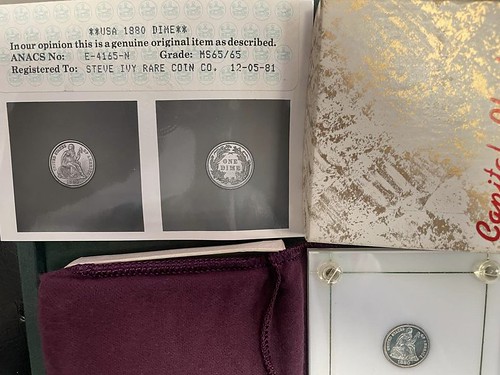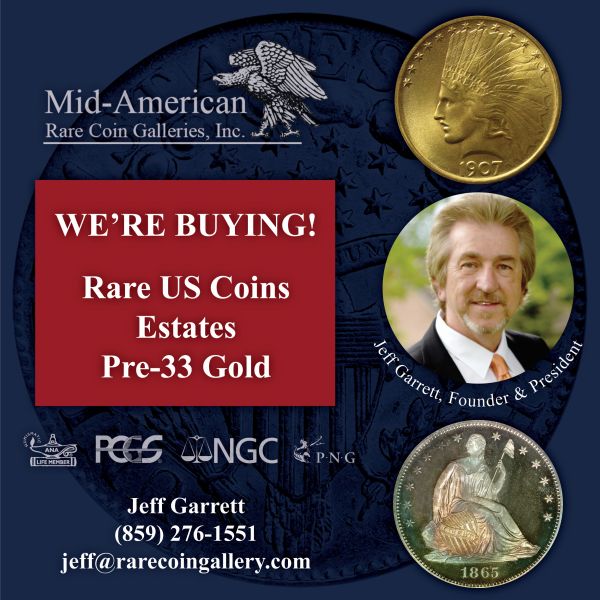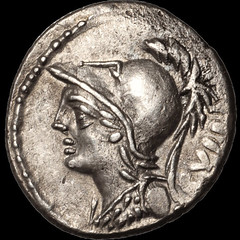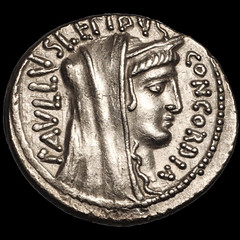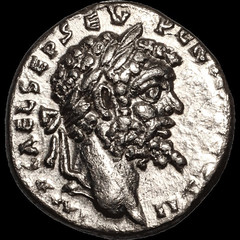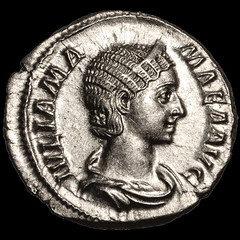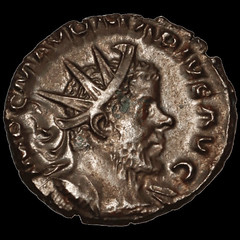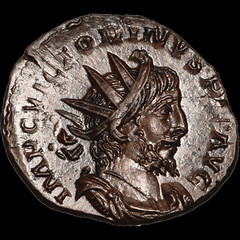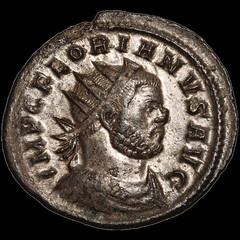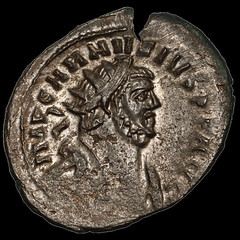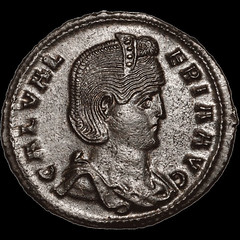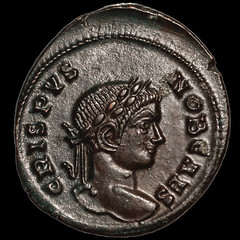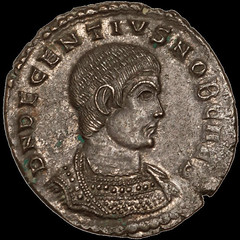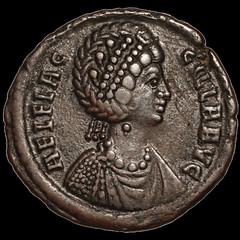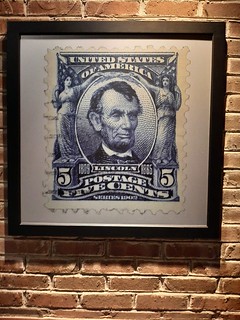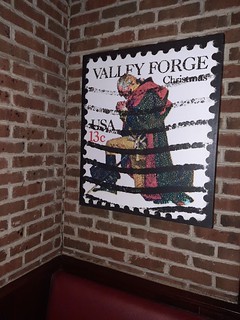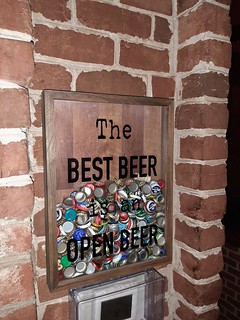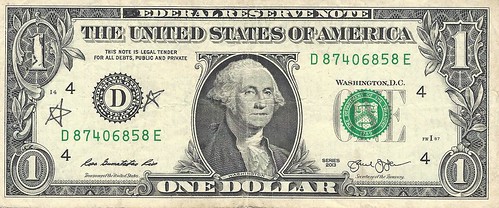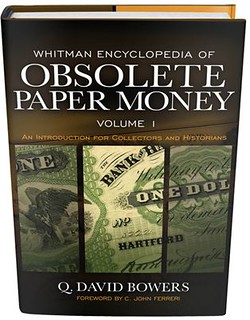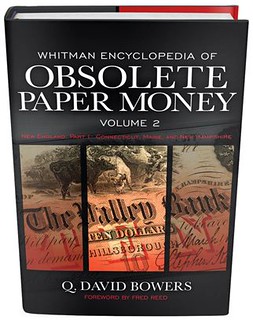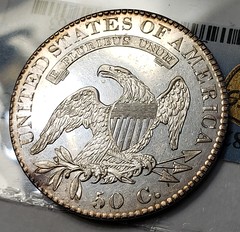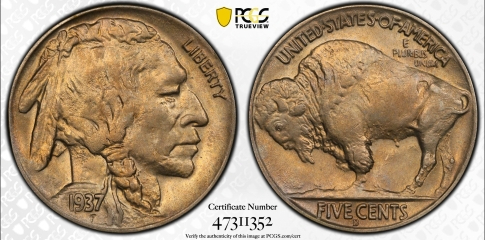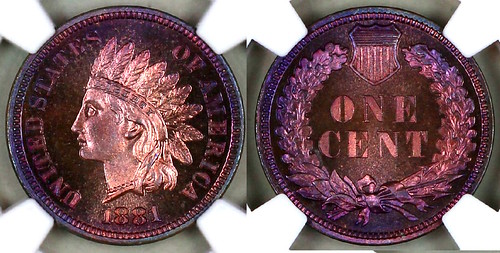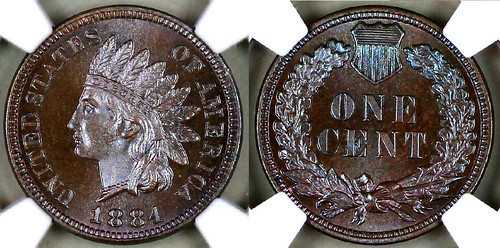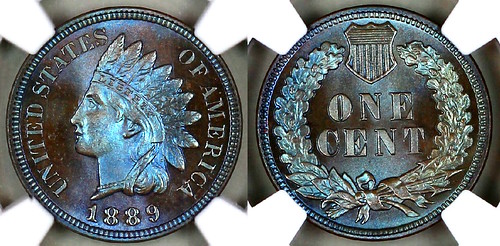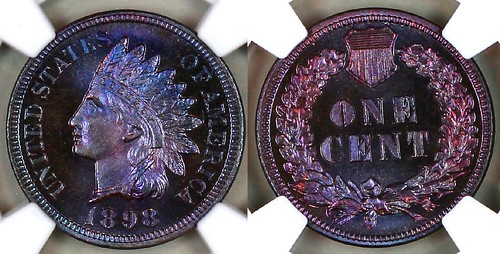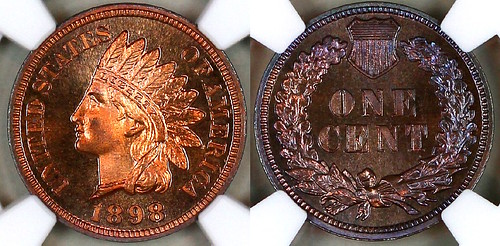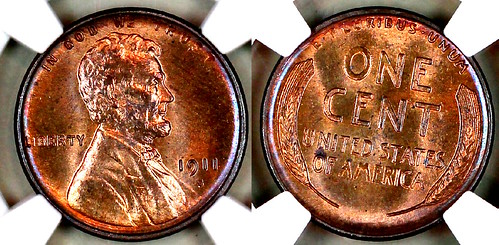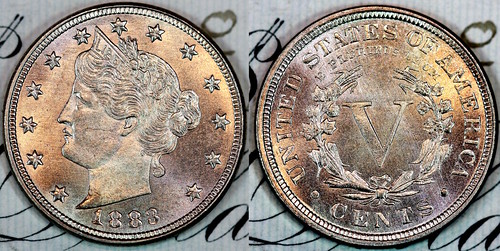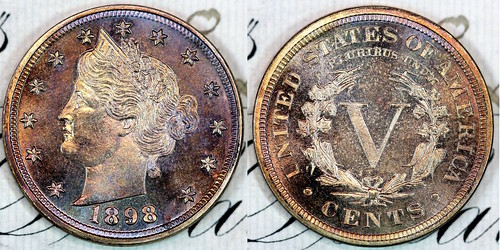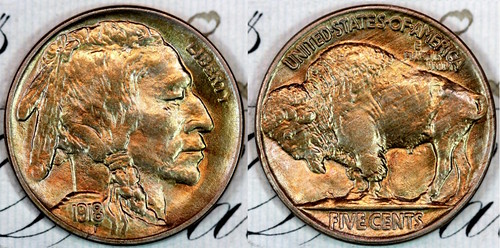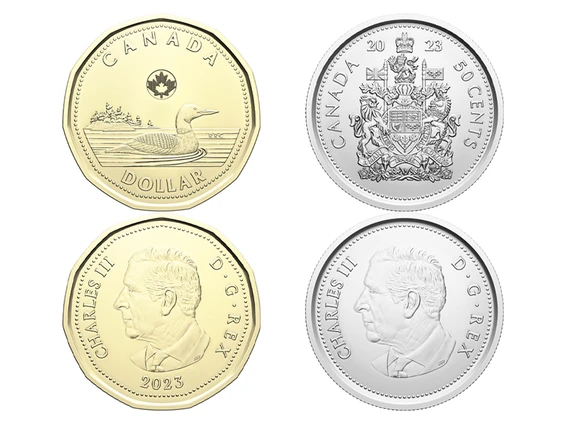
Visit our NBS Sponsors




About UsThe Numismatic Bibliomania Society is a non-profit association devoted to the study and enjoyment of numismatic literature. For more information please see our web site at coinbooks.org SubscriptionsThose wishing to become new E-Sylum subscribers (or wishing to Unsubscribe) can go to the following web page link MembershipThere is a membership application available on the web site Membership Application To join, print the application and return it with your check to the address printed on the application. Print/Digital membership is $40 to addresses in the U.S., and $60 elsewhere. A digital-only membership is available for $25. For those without web access, write to: Jeff Dickerson, Treasurer AsylumFor Asylum mailing address changes and other membership questions, contact Jeff at this email address: treasurer@coinbooks.org SubmissionsTo submit items for publication in The E-Sylum, write to the Editor at this address: whomren@gmail.com BUY THE BOOK BEFORE THE COINSale Calendar |
- WAYNE'S WORDS: THE E-SYLUM NOVEMBER 26, 2023
- ASYLUM WINTER 2023 ISSUE PUBLISHED
- VILA RICA MOEDAS AUCTION 19 LITERATURE
- NEW BOOK: LE FRANC - NAPOLEON I
- NEW BOOK: SIERRA DE PINOS 1814
- NEW BOOK: DR ANDREW COLTEE DUCAREL
- NEW BOOK: COIN COLLECTING STRATEGIES
- HARVEY B. RICHER (1944-2023)
- DAHLONEGA MINT GOLD COIN ANALYSIS
- VIDEO: 1715 FLEET SOCIETY
- TRANSCRIPTIONS RELATED TO PUERTO RICAN COINAGE
- TITANIC VICTIM JOHN GILL'S HALF DOLLAR
- EVERYTHING-O-RAMA
- THE AGE OF THE AI AUCTIONEER?
- NOTES FROM E-SYLUM READERS: NOVEMBER 26, 2023
- THE TOKEN CORRESPONDING SOCIETY
- ROMAN REPUBLICAN DIE PROJECT CONFERENCE
- ANA SEEKS 2024 AWARD NOMINATIONS
- VOCABULARY TERM: OVAL MEDAL
- SHAPERO, DODSON AND THEIR MONEY MUSEUM
- CHASE MANHATTAN MUSEUM BRENNER EXHIBIT
- COL. GREEN AND THE INVERTED JENNYS
- DAVID SCHENKMAN INTERVIEW, PART FOUR
- CIRCA 1981 ANACS GRADING CERTIFICATES
- DAVISSONS E-AUCTION 48: ROMAN PORTRAITS
- WAYNE'S NUMISMATIC DIARY: NOVEMBER 26, 2023
- MUSEUM RECLASSIFIES EMPEROR ELAGABALUS
- ROYAL CANADIAN MINT ISSUES CHARLES COINS
- 54TH JEWISH-AMERICAN HALL OF FAME MEDAL ISSUED
- FREIGELD: MONEY THAT EXPIRES
- THE CASHLESS CONSPIRACY DISTRACTION
- NFL THANKSGIVING COIN-TOSS KERFUFFLE
Content presented in The E-Sylum is not necessarily researched or independently fact-checked, and views expressed do not necessarily represent those of the Numismatic Bibliomania Society.
WAYNE'S WORDS: THE E-SYLUM NOVEMBER 26, 2023
 New subscribers this week include:
Bruce B.
Welcome aboard!
New subscribers this week include:
Bruce B.
Welcome aboard!
Thank you for reading The E-Sylum. If you enjoy it, please send me the email addresses of friends you think may enjoy it as well and I'll send them a subscription. Contact me at whomren@gmail.com anytime regarding your subscription, or questions, comments or suggestions about our content.
This week we open with a new issue of our print journal, a numismatic literature sale, four new books, an obituary, updates from the Newman Numismatic Portal, reader comments and more.
Other topics this week include the Dahlonega Mint, the 1715 Fleet, coins from the Titanic, oval medals, the Money Museum of the National Bank of Detroit, Victor David Brenner, ANACS grading certificates, Emperor Egalabalus, and Money That Expires.
To learn more about the Hart plate of early American paper money, Brazilian medals, French essays, Puerto Rican coinage, Jenny Lind, the Token Corresponding Society, Nate Shapero, Oscar Dodson, Solomon Carvalho, hard rubber tokens, auction previews, and the King Charles Canadian cent, read on. Have a great week, everyone!
Wayne Homren
Editor, The E-Sylum
ASYLUM WINTER 2023 ISSUE PUBLISHED
The Winter 2023 issue of The Asylum is on the way from our sponsor, the Numismatic Bibliomania Society. Maria Fanning edits our print journal, and she submitted this report. Thank you. -Editor
Welcome to The Asylum's Winter 2023 digital edition.
- George Kolbe Retires From Bookselling By Kolbe &Fanning
- A Bookbinder's Journey, Part 2: Putting It Together By Jeff Dickerson
- Book Review: Kushan Mystique By David Jongeward Reviewed by David F. Fanning
- The Hart Plate of Early American Paper Money By Leonard Augsburger
- ASSOCIATIONS • Autographs • Annotations • Inscriptions: The Robert D. Bruce Copy of the Supplemented Manual of Gold and Silver Coins of all Nations: The Banquo's Ghost of American Numismatics By Joel J. Orosz
- The Ugliest Book in my Library and a Life Less Ordinary By Darryl A. Atchison, F.C.N.R.S.
- History of the Coin Circulation in Cuba By Roberto Menchaca García
Message from NBS President Len Augsburger
Welcome to the winter issue of The Asylum, orchestrated by our editor, Maria Fanning. A big thanks are due as always to Maria, who not only handles graphics and layout of the The Asylum, but also oversees printing and distribution, coordination of NBS club-related content within each issue, and a host of other things I never thought about,
such as ballot enclosures. Please extend thanks to Maria as the occasion arises. Maria further handled the production of the recently issued Asylum ten-year index, covering volumes 31–40 (2013–2022), which all NBS members should have received by now.
One of the things I've enjoyed about the NBS is the willingness of the membership to freely share information with one another. While we all take pride in our collections, none of us are competing for slabbed, certified, or top pop
examples of our favorite numismatic literature. We certainly enjoy owning rare or unique items, but the competitive aspect of registry sets is not as intensely felt in our corner of the hobby. I'd like to think this makes for a more collegial and cooperative environment, and the article I've contributed this quarter draws on information from a good number of fellow collectors and dealers. Enjoy this issue, and I hope to see all of you at an upcoming show or convention.
The Asylum theme issue: Serendipitous Finds
Have you ever had an amazing numismatic literature find at a flea market, a garage sale, or an estate auction? Have you ever come across a book that seemed worthless only to discover it had value beyond its initial impression?
Tell us all about it in our next issue all about serendipitous finds!
Send your story (with photos) to Maria Fanning at asylum@coinbooks.org by February 1, 2024 to be included in our next issue.
Please renew your membership in the NBS to continue receiving The Asylum. Go to coinbooks.org to pay by PayPal or download a membership form today. Your current expiration date is printed to the right of your name on your subscription envelope, which should be arriving soon.
VILA RICA MOEDAS AUCTION 19 LITERATURE
There are several lots of numismatic literature in the upcoming Auction 19 from Vila Rica Moedas in São Paulo, Brazil. Here's the literature section of their recent press release. -Editor
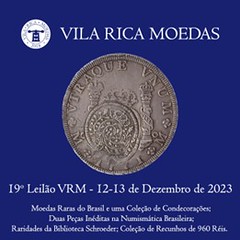 Vila Rica will hold its Auction 19 on December 12th and 13th. The auction is internet-only and split over two sessions. It will offer a vast range of Brazilian coins and decorations from Colonial to Republican issues. including a selection of rare books from the Cláudio Schroeder Library, including the famous
Vila Rica will hold its Auction 19 on December 12th and 13th. The auction is internet-only and split over two sessions. It will offer a vast range of Brazilian coins and decorations from Colonial to Republican issues. including a selection of rare books from the Cláudio Schroeder Library, including the famous Catálogo de Medalhas Brazileiras e das Estrangeiras Referentes ao Brazil
(Catalog of Brazilian and Foreign Medals Referring to Brazil), by the Viscountess of Cavalcanti, as well as a catalog by the same Viscountess, previous to this one, extremely rare (only 25 printed copies) and missing in the vast majority of the most advanced libraries.
Lot 354 - Literature, Dr. Cândido de Azeredo Coutinho, 1862. Apreciação do Medalheiro da Casa da Moeda. Original edition from 1862 with handwritten cover (very fragile paper) and with staples. Classic work of National Numismatics with the description of the coins from the 1861 Exhibition. Includes an exceptional engraving of D. Pedro I. Very rare.
Lot 355 - Literature, Viscountess of Cavalcanti, 1889. Catálogo de Medalhas Brazileiras e das Estrangeiras Referentes ao Brazil - 1st Edition. Very rare. Copy number 17 of only 25 copies printed in Paris. Preliminary work of the 1910 catalogue, providing descriptions of the medals then cataloged by the Viscountess. Dedicated and autographed copy, with the dedication erased. This work is rarely offered on the market and missing even in the collections of more advanced bibliophiles and numismatists.
Lot 356 - Literature, Viscountess of Cavalcanti, 1910. Catálogo das Medalhas Brazileiras da Collecção Numismática à Viscondessa de Cavalcante. 2 volumes - texts and plates. Paris, 1910. Copy #2 of a print run of 100. Masterpiece by Visconcessa de Cavalcanti printed in Paris. Base book for the Brazilian medal collection. Volume 1 with the descriptive text of the medals presented in the catalogue; Volume 2 with the medal plates presented in the catalog printed on heavyweight paper and separated by silk sheets. Rare and missing from most advanced numismatic libraries. A rare opportunity to acquire a copy in very good condition of this important and rare work. With ex-Libris by Cecília Barbosa de Moura
The auction will take place on December 12th and 13th. Registration for bidding can be done at https://leiloes.vilaricamoedas.com/. If you need assistance, please feel free to contact either David or Hilton through the email info@vilaricamoedas.com and they will be happy to assist you with registration. Bids can also be accepted through the Sixbid platform.
NEW BOOK: LE FRANC - NAPOLEON I
Laurent Schmitt submitted this announcement of a new book series in French and in English about French essays. The first volume covers Napoleon I (1803-1815). Thank you. -Editor
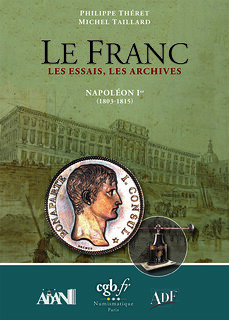 Philippe Théret and Michel Taillard supported by the associations ADF (Friends of the Franc) and ADAN
(Friends of Numismatic Authors) have worked to provide collectors and professionals with new tools to
approach the fascinating field of French essays of the period 1803 to 1870. That is to say from the creation of
the Germinal Franc under Napoleon Bonaparte to the fall of Napoleon III.
Philippe Théret and Michel Taillard supported by the associations ADF (Friends of the Franc) and ADAN
(Friends of Numismatic Authors) have worked to provide collectors and professionals with new tools to
approach the fascinating field of French essays of the period 1803 to 1870. That is to say from the creation of
the Germinal Franc under Napoleon Bonaparte to the fall of Napoleon III.
The field of essays is wide: coin design contest essays, design trials, splashers, trial strikes, patterns, branch mint trials, political propaganda essay strikes (Napoleon II, Henri V...), presentation strikes for dignitaries, proof strikes, restrikes for collectors, Mint Visit strikes (Paris mint and branch mints)...
A collection of six volumes (one per period) are in preparation since mid 2021.
The most important public institutions have collaborated in the realization of these works:
- The Monnaie de Paris opened the doors of its cabinet (4,500 photos taken) but also those of the redzone of the Pessac mint, where the museum's monetary tools are kept (12,000 photos taken);
- The BnF (Bibliothèque Nationale de France) allowed us to study and photograph their prestigious19th century period, numismatic collections (5,000 photos taken);
- The Carnavalet Museum and its most precious numismatic collection (2,500 photos taken);
- The cabinet of the Bibliothèque Royale de Belgique.
It is clear that public collections contributed very largely to the census to produce the various works. But it would nevertheless be simplistic to only take these sources into account. These collections, as admirable as they are, do not have all the different essays. The catalogs of the different sales over time have made it possible not only to refine this inventory but also to assess the frequencies of appearance, rarities, prices and their evolution.
In addition to these important contributions, 160,000 pages of archives have been digitized over the past 20 years. This has allowed to better understand the essays and in many cases the manufacturing figures!
For this series of books, the structure of each book will remain the same: the first part will be dedicated to the archives, a second part dedicated to the census catalog (with price quotes) and finally a third part, the Gallery, with full page photo plates.
The first volume covering the period of Napoleon I, from 1803 to 1815 was just released in november 2023 (Editor : cgb.fr).
For more information, or to order, see:
Le Franc Les Essais, Les Archives - Napoléon Ier (1803-1815) THÉRET Philippe, TAILLARD Michel
(https://www.cgbfr.com/le-franc-les-essais-les-archives-napoleon-ier-1803-1815-theret-philippe-taillard-michel,lf27,a.html)
NEW BOOK: SIERRA DE PINOS 1814
Adrián González-Salinas of Monterrey, N.L. Mexico shared this information about a new numismatic book on the royalist coins of the Mexican War of Independence. Thank you! -Editor
Title: Ylustre Ayuntamiento de Sierra de Pinos 1814 - Estudio sobre las monedas realistas de la guerra de independencia, acuñadas en Pinos, Zacatecas, en 1814
[Illustrious City Council of Sierra de Pinos (*) 1814 - Study on the royalist coins of the War of Independence, minted in Pinos, Zacatecas, in 1814]
Author: Rubén López-Aguilar ( ruben_lopez_aguilar@live.com.mx )
Language: Spanish
Edition: First
Year: September 2023
Pages: 76
Width x Height x Thick: 14 x 21.5 x 0.5 cms
# Copies: 500 in full color.
Cost: MXN$500 (around US$27.78) + S/H
Contents
1) Antecedentes Generales
(General Background)
2) Descripción general y explicación de la simbología heráldica de las monedas de Sierra de Pinos de 1814
(General description and explanation of the heraldic symbology of the 1814 Sierra de Pinos coins)
3) Variedades de la Moneda de Sierra de Pinos (**)
(Varieties of the Sierra de Pinos Coinage)
4) Observaciones y análisis del contexto de las monedas realistas de Sierra de Pinos
(Observations and analysis of the context of the royalist coins of Sierra de Pinos)
5) Polémica sobre la existencia de piezas de plata
(Controversy about the existence of silver coins)
6) Las ediciones conmemorativas de 2014 y 2018
(The 2014 and 2018 commemorative issues)
7) Bibliografía
(Bibliography)
8) Agradecimientos (Acknowledgements)
(*) Sierra de Pinos could be translated as Pines' Sierra or Pines' Mountain Range. (**) The author catalogs 5 varieties of this coinage.
The book can be ordered from author Rubén López-Aguilar at ruben_lopez_aguilar@live.com.mx
Adrián also provided the below list of books in which the coin has been catalogued. Click on the image to bring up a larger copy on our Flickr archive. -Editor
NEW BOOK: DR ANDREW COLTEE DUCAREL
Gil Parsons passed along word of a new book on the life of numismatic author Dr Andrew Coltée Ducarel with an essay by Andrew Burnett on his numismatic pursuits. He also suggested the Wikipedia and Google Books links shown below. Thank you! As time goes on we are learning more and more about the great numismatists of the past. I added images of Ducarel's 1757 work on coins of the Kings of England. -Editor
‘I do not eat the bread of idleness': Dr Andrew Coltée Ducarel 1713–1785, Huguenot, Lawyer, Librarian, Numismatist, and Antiquary.
MYERS, Robin, Andrew BURNETT, and Renae SATTERLEY.
The Garendon Press, 2023.
£45
Approximately:
US $56 €51
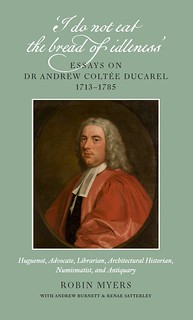 This volume brings together revised versions of four of Robin Myers's papers on aspects of Ducarel's life and work published between 1994 and 2002, and ‘The Life and Times of the Ducarel Brothers', her recent introductory essay to Two Huguenot Brothers: Letters of Andrew and James Coltée Ducarel, 1732–1773 (The Garendon Press, 2019), which has been updated with a section by Adam Pollock on the life of the Ducarel children among other Huguenot families in Greenwich. It also contains new essays by Robin Myers on the collaboration and developing friendship between Ducarel and Philip Morant (1700–1770), historian of Essex, and on Doctors' Commons, an institution whose name most know but few understand. To complement these Renae Satterley, Librarian of the Middle Temple, contributes an essay on Doctors' Commons Library, and Andrew Burnett, former Keeper of Coins and Medals at the British Museum, on Ducarel as numismatist. The appendix comprises a family tree from Ducarel to the present day, an annotated list of works of Andrew Ducarel, a timeline of Ducarel's life, and bibliography. Penelope Bulloch, Christine Ferdinand, and Lorren Boniface helped to edit the work.
This volume brings together revised versions of four of Robin Myers's papers on aspects of Ducarel's life and work published between 1994 and 2002, and ‘The Life and Times of the Ducarel Brothers', her recent introductory essay to Two Huguenot Brothers: Letters of Andrew and James Coltée Ducarel, 1732–1773 (The Garendon Press, 2019), which has been updated with a section by Adam Pollock on the life of the Ducarel children among other Huguenot families in Greenwich. It also contains new essays by Robin Myers on the collaboration and developing friendship between Ducarel and Philip Morant (1700–1770), historian of Essex, and on Doctors' Commons, an institution whose name most know but few understand. To complement these Renae Satterley, Librarian of the Middle Temple, contributes an essay on Doctors' Commons Library, and Andrew Burnett, former Keeper of Coins and Medals at the British Museum, on Ducarel as numismatist. The appendix comprises a family tree from Ducarel to the present day, an annotated list of works of Andrew Ducarel, a timeline of Ducarel's life, and bibliography. Penelope Bulloch, Christine Ferdinand, and Lorren Boniface helped to edit the work.
Dr Andrew Coltée Ducarel (1713–1785) and his two younger brothers were brought to England in 1722 as infants by their widowed mother fleeing persecution for her faith. Ducarel became a civilian or advocate of Doctors' Commons, the Inn of Court specialising in Roman and Canon law which dealt with ecclesiastical law, marriage, divorce, and probate, and maritime law in the High Court of Admiralty. Ducarel made a good living as an advocate, which fully occupied him in term time, while his vacations were given to his work as Librarian of Lambeth Palace from 1754. He was an active member of the Society of Antiquaries, pioneered the study of Norman architecture, and was a keen book and coin collector.
‘I do not eat the bread of idleness' has been designed by Robert Dalrymple. Consisting of 264 pages, measuring 285 x 170 mm., it is profusely illustrated with portraits, coins from Ducarel's collection, plates from works by Andrew Ducarel, and other contemporary prints sourced by Penelope Bulloch; it has attractive endpapers, sewn binding, rounded and backed and an eye-catching jacket. It is designed as a companion piece to Two Huguenot Brothers and will appeal to those who appreciate excellence in book production.
For more about Ducarel on Wikipedia, see:
Andrew Ducarel
(https://en.wikipedia.org/wiki/Andrew_Ducarel)
To read Ducarel's 1757 work, see:
A Series of Above Two Hundred Ango-Gallic, Or Norman and Aquitain Coins of the Antient Kings of England
(https://www.google.com/books/edition/A_Series_of_
Above_Two_Hundred_Ango_Galli/PWAGAAAAQAAJ?hl=en)
For more information, or to order, see:
I do not eat the bread of idleness': Dr Andrew Coltée Ducarel 1713–1785, Huguenot, Lawyer, Librarian, Antiquary, and Numismatist.
(https://www.quaritch.com/books/myers-robin-andrew-burnett-i-and-i-renae-satterley/i-do-not-eat-the-bread-of-idleness-dr-andrew-colt/U64/)
NEW BOOK: COIN COLLECTING STRATEGIES
This new title showed up in our Facebook feed this week. It's available in hardbound, softbound and electronic formats. Here's the description from Amazon. -Editor
Unravel the global journey of numismatics, connecting readers with the diverse cultures, histories, and artistry encapsulated in each coin. Learn about some of the most valuable and hard-to-find coins in the world.
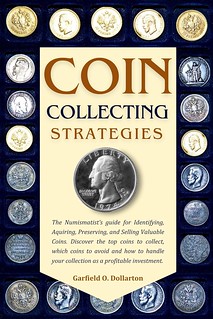 This guide is suitable for both beginners and experienced collectors. It is a treasure chest full of insights, stories, and practical advice for building your own collection.
This guide is suitable for both beginners and experienced collectors. It is a treasure chest full of insights, stories, and practical advice for building your own collection.
- Explore the joys of building a coin collection
- Covers everything you need to know about numismatics
- Learn a myriad of methods for acquiring coins.
- A dedicated chapter unveils the collector's language, shedding light on the unique terms and slangs used within the numismatic community.
- From navigating online marketplaces to attending coin shows and joining clubs, readers gain an understanding of acquisition methods.
Discover Specialized coin-collection strategies, from error coins to exonumia, we cover the top coins to collect, providing insight into their unique appeal and characteristics.
This comprehensive guide then takes a practical turn, offering guidance on the financial aspects of coin collecting. This includes acquisition strategies, monetization techniques, and considerations for selling coins through various channels like auctions and estate sales.
Also a BONUS included are narratives by collectors, weaving in real-life stories, illustrating unexpected discoveries, and the passionate pursuit of unique coins. From the seasoned collector sharing tales of finding rare coins to a grandfather introducing his grandchild to the world of numismatics, these stories add a personal touch to this numismatic adventure.
For more information, or to order, see:
Coin Collecting Strategies: The Numismatist's guide for Identifying, Aquiring, Preserving, and Selling Valuable Coins.
(https://www.amazon.com/dp/B0CNRL37RJ)
HARVEY B. RICHER (1944-2023)
Astronomer and numismatic author Harvey B. Richer passed away earlier this month. Sorry to hear the news. Here's an excerpt from his online obituary. -Editor
 It is with profound sadness that we announce the passing of Professor Harvey Brian Richer, on Monday, November 13, 2023.
It is with profound sadness that we announce the passing of Professor Harvey Brian Richer, on Monday, November 13, 2023.
Harvey was born and raised in Montreal but relocated to British Columbia in the early 1970s. Harvey was a Professor of Physics and Astronomy at UBC for over 50 years and passionately devoted his time to exploring the cosmos. He reveled in collaborating with his peers both locally and globally to further our understanding of the evolution of stellar astrophysics. An avid lover of the arts, numismatics, astronomical outreach programs and the pursuit of athletics, Harvey had a profound impact on the lives of everyone he encountered and will be deeply missed by his family, colleagues and dear friends.
The funeral took place on Thursday, November 16th at the Beth Israel Cemetery Chapel in Vancouver.
To read the complete online obituary, see:
Professor Harvey Richer
(https://www.paperman.com/en/funerals/2023-11-16-professor-harvey-richer)
Canadian Coin News published an article about Richer - here's an excerpt. -Editor
Canadian astronomer, professor and numismatist Harvey B. Richer, who wrote two authoritative books on Newfoundland gold coins and on Canada's top 100 coins and tokens, died on Monday, Nov. 13, 2023.
A long-time numismatist whose day job included groundbreaking research in astronomy and physics at the University of British Columbia (UBC), Richer has published more than 175 scientific papers in peer-reviewed journals, including Nature and Science. His first numismatic book came in 2017 with The Gold Coins of Newfoundland, 1865-1888. His second book, 100 Greatest Canadian Coins and Tokens, was released in 2022 by U.S.-based Whitman Publishing.
According to the About the Author
profile in his second book, Prof. Richer was one of Canada's largest users of the Hubble Space Telescope over the past 20 years. In 2014, he was named the recipient of the Carlyle S. Beals Award of the Canadian Astronomical Society, given for lifetime achievement. He was also named a Fellow of the Royal Society of Canada, the foremost academic society in Canada and of similar stature to membership in the National Academy of Sciences in the United States.
To read the CanadianCoin News article, see:
Prolific author Harvey B. Richer ‘a valued member of the numismatic community'
(https://canadiancoinnews.com/prolific-author-harvey-b-richer-a-valued-member-of-the-numismatic-community/)
Another numismatic connection - the Harvey B. Richer Gold Medal. -Editor
The Richer Medal was established in 2016 thanks to a generous gift from Harvey B. Richer, a former Director of CASCA and Professor at the University of British Columbia.
The Richer Medal is awarded every second year, in odd-numbered years, in recognition of significant and sustained early career research in astronomy. To be eligible, the nominee must be a member of CASCA in good standing, and a Canadian astronomer or an astronomer working in Canada.
To read the complete article, see:
Harvey B. Richer Gold Medal for Early Career Research in Astronomy
(https://casca.ca/?page_id=7914)
For more on Harvey's career, see:
Celebrating Harvey
(http://richer.stellar-astrophysics.org/about.html)
To read earlier E-Sylum articles, see:
NEW BOOK: GOLD COINS OF NEWFOUNDLAND
(https://www.coinbooks.org/v20/esylum_v20n29a04.html)
NEW BOOK: 100 GREATEST CANADIAN COINS AND TOKENS
(https://www.coinbooks.org/v25/esylum_v25n33a05.html)
BOOK REVIEW: 100 GREATEST CANADIAN COINS
(https://www.coinbooks.org/v25/esylum_v25n38a05.html)
THE BOOK BAZARRE
DAHLONEGA MINT GOLD COIN ANALYSIS
In this report, Newman Numismatic Portal Project Coordinator Len Augsburger reviews an analysis of the Fairmont Collection in the new edition of Doug Winter's Gold Coins of the Dahlonega Mint, 1838-1861 -Editor
Analysis of the Fairmont Collection of U.S. Gold Coins
 It's rare that a single chapter of a new book demands its own review, but Doug Winter's recent publication, Gold Coins of the Dahlonega Mint, 1838-1861 (Fourth Edition) represents such an example. As nearly all collectors of U.S. gold coins know, Stack's Bowers has been offering selections from the Fairmont collection in a series of sales since 2018. The origin of the collection remains unknown, and no comprehensive inventory has been released. A plausible speculation suggests the source is a European or Canadian bank. The total size of the collection, and the number of remaining Stack's Bowers sales, remains a mystery.
It's rare that a single chapter of a new book demands its own review, but Doug Winter's recent publication, Gold Coins of the Dahlonega Mint, 1838-1861 (Fourth Edition) represents such an example. As nearly all collectors of U.S. gold coins know, Stack's Bowers has been offering selections from the Fairmont collection in a series of sales since 2018. The origin of the collection remains unknown, and no comprehensive inventory has been released. A plausible speculation suggests the source is a European or Canadian bank. The total size of the collection, and the number of remaining Stack's Bowers sales, remains a mystery.
Richard Radick, a retired Air Force astrophysicist, has intensely studied Stack's Bowers auction records, PCGS and CAC population reports, and other data to glean insights into the Dahlonega half eagles in the Fairmont collection. What happens when a rocket scientist focuses their attention on the rare coin market? The answer is found In Winter's latest book, for which Radick contributes a ten-page essay that should be mandatory reading for anyone making purchases from the Fairmont sales.
Radick pays particular attention to jumps
in the PCGS population data, as published in editions of the bi-monthly PCGS Market Report. Can these jumps
be confidently attributed to the Fairmont collection? Radick points out that substandard Fairmont coins have been resubmitted to PCGS and have lost the Fairmont pedigree in the process. Yet, these pieces retain the original submission IDs on the tag, IDs which fall in the same range as Fairmont-pedigreed coins. The logical explanation is that the Fairmont pedigree is used to market the best pieces from this collection, while lesser material is marketed in PCGS holders without the Fairmont pedigree. In the process, Radick can reasonably estimate the overall size of the collection (at least the portion which has been submitted to PCGS), which is far larger than the number of coins that have appeared at auction under the Fairmont branding.
Radick further analyzes the distribution of dates within the Fairmont Dahlonega half eagles and demonstrates the distribution is proportional to the original production, especially when one considers the exponential decay that would be expected over time (the Fairmont collection includes pieces from 1834 to 1932; one theory suggests the hoard was a U.S. bank holding exported to avoid the 1933 gold recall). Thus, the Fairmont group more closely resembles a circulation hoard than a numismatically formed collection. A related study is found in the 1902 U.S. Mint report, which analyzed the dates of mutilated coinage returned to the Mint in that year. Two anomalies are noted by Radick, with one issue especially underrepresented (have these coins not yet been certified?) and another date overrepresented.
While the fourth edition of Gold Coins of the Dahlonega Mint is not on Newman Portal, Doug has graciously made earlier editions of his works available via NNP. In the meantime, Gold Coins of the Dahlonega Mint can be ordered directly from Doug Winter Numismatics.
Images: 1841-D $5 from the Fairmont Collection, PCGS MS61, Stack's Bowers, April 6, 2022, lot 5019, realized $22,800.
Link to Doug Winter books on Newman Portal:
https://nnp.wustl.edu/library/booksbyauthor/2037
Link to Doug Winter website:
https://raregoldcoins.com/
Link to U.S. Mint 1902 Annual Report:
https://nnp.wustl.edu/library/book/321
To read the earlier E-Sylum article, see:
NEW BOOK: DAHLONEGA MINT GOLD, 4TH EDITION
(https://www.coinbooks.org/v26/esylum_v26n44a03.html)
VIDEO: 1715 FLEET SOCIETY
The David Lisot Video Library on the Newman Numismatic Portal can be found at:
https://nnp.wustl.edu/library/multimediadetail/522852
We highlight one of his videos each week in The E-Sylum. Here's one from 2017 with Ben Costello speaking about the 1715 Fleet Society. -Editor
1715 Fleet Society Features Spanish Sunken Treasure
Ben Costello, Director, 1715 Fleet Society, interviewer: David Lisot, CoinTelevision.com. In 1715 a fleet of Spanish ships sailing from Cuba were wrecked along the coastline of Florida during a violent hurricane. The 1715 Fleet Society is devoted to research and information about this historic event. Director Ben Costello tells about the goals and objectives of the organization.
To watch the complete video, see:
https://nnp.wustl.edu/library/book/548594
TRANSCRIPTIONS RELATED TO PUERTO RICAN COINAGE
Ángel Navarro writes:
"Here is a link to a transcription of documents found at the National Archives. The access to these documents was thanks to Mr. Roger W. Burdette and Mr. Len Augsburger who were really kind and sent me a copy of the original documents for me to use for research. They are related to Puerto Rican numismatics and the U.S. Mint. Currently I am working on a research article using these documents. I sent the transcription to NNP so that other numismatists can do their own research using them."
Roger's work at the National Archives is important and groundbreaking. Just getting in there to manually search through box after box after dusty box is tedious and just the beginning. Once useful handwritten documents are located they must be scanned and transcribed before they can be fully discoverable and useable by researchers. But the Newman Numismatic Portal platform makes this great resource accessible to researchers everywhere. Here are some documents as examples of the great information found in this latest batch. Thanks, Ángel! -Editor
To access the complete set of transcriptions, see:
[Transcriptions Related to Puerto Rican Coinage]
(https://archive.org/details/rg104entry229puertorico/mode/1up)
TITANIC VICTIM JOHN GILL'S HALF DOLLAR
Julia Casey writes:
"I just read your fascinating Titanic auction find story and when I put some terms into Google to see if there was any info about price etc. I found this -- and it was on Pawn Stars!"
Julia found a sale record for Gill's half dollar. "$4.60 in United States silver" was recovered from his body. Here's the lot description. The coin sold for $20,974 with Buyers Premium. -Editor
Silver half-dollar recovered from second-class passenger John Gill, retained by his family for 90 years
A 1906 US silver half dollar, recovered from the body of Titanic victim John W. Gill. Gill was a second-class passenger travelling to America to seek a new life and home for himself and his wife, who had remained in England. Perishing in the frigid waters of the North Atlantic, Gill's body was the 155th body recovered by the Mackay-Bennett, eventually being buried at sea. Numerous objects were recovered from his body and catalogued before being returned to his widow, including this silver piece, all of which were included in the inventory list prepared by the provincial coroner of Nova Scotia.
Sarah Gill was never able to bring herself to spend the money and retained it with his other effects including his pocket watch, keys, ring, and additional money and everything remained with the family for 90 years. All possessions recovered from Gill were sold in the April 2002 Henry Aldridge and Son Titanic 90th anniversary collection auction, and are accompanied by a catalog from that auction, as well as a photocopy of the catalog page from Aldridge and Son's 100th anniversary auction, where this piece was offered singly.
Spending £13 for his ticket, Gill was supposed to be joined on the voyage by his wife and father-in-law to start a new life in America, but he travelled alone when Sarah and her father stayed behind to complete their business, while intending to join John later that year. Married for only two months when he died, his wife fell in to such a state of shock that she was unable to speak for over 20 years. A heart-wrenching relic of a young couple's promising future shattered by the tragedy of April 15, 1912.
Provenance: John W. Gill Family Henry Aldridge &Son Auction, 2002 Henry Aldridge &Son Auction, 2012 RR Auction COA.
To read the complete lot description, see:
John W. Gill Silver Half Dollar
(https://www.rrauction.com/auctions/lot-detail/3320268042723-john-w-gill-silver-half-dollar)
To watch the Pawn Stars episode with David Vagi, see:
Pawn Stars: John W. Gill Half Dollar | History
(https://www.youtube.com/watch?v=v6oXTNsh9iQ)
To read the earlier E-Sylum article, see:
TITANIC VICTIM JOHN GILL'S SILVER DOLLAR
(https://www.coinbooks.org/v26/esylum_v26n47a20.html)
EVERYTHING-O-RAMA
Andy Newman writes:
"I enjoyed reading this week's article on Coin-O-Rama City, for which I have a particular affinity since for over 40 years I've collected all things using the suffix "rama" (a usage which began in England in 1789). Among the many thousands of objects in my collection are a small number of numismatic ones. I am always searching for additional items to add to the collection---numismatic or beyond."
Andy supplied this list and photos of selections of wooden nickels, tokens, medals and ephemera from his extensive collection. Thanks! Andy can be reached at newandyman@gmail.com . -Editor
To read the earlier E-Sylum article, see:
COIN-A-RAMA CITY
(https://www.coinbooks.org/v26/esylum_v26n47a18.html)
THE AGE OF THE AI AUCTIONEER?
Kavan Ratnatunga of Sri Lanka writes:
"I attended a US Heritage Auction online and there was no video stream of the auctioneer. All I saw were still images of auctioneers which kept changing in rotation and the audio was clearly computer generated. What I did not expect was audio and screen output specific to me when I was actually bidding urging me to bid to win. I am curious if there is also a Real Live Floor Auction with a real Auctioneer, or if it is all done by computer using AI. I even saw it switch back on rare occasions to a just-closed lot when a late bid came just after it closed.
"Have you experienced this online auction format? See my unlisted recording https://youtu.be/1FbMvk0D2VI ."
I'm not a regular online auction participant, but that looks like pretty standard computer-generated text - I wouldn't call it artificial intelligence. -Editor
Kavan adds:
"I am told this is now standard for the HA Weekly Auction. One had hardly time to read this extra red text which only created confusion as to which bids had come in, particularly as this was my first exposure to it. It was aimed at getting bids without realizing how much one was bidding. Before using HA Bid Live, I should have read their clear guide."
To read the complete Heritage auction guide, see:
What is Heritage Live!® (Covered by U.S. Patent No. 9,064,282)?
(https://currency.ha.com/c/ref/web-tips.zx?ic=Tab-BidBuy-ThreeThingsToKnowAboutHeritageLive-111815-interior#live)
We'll miss the thrill of in-person auctions, but online bidding is here to stay and hopefully will only get better as further enhancements improve the experience. -Editor
Kavan adds:
"Anyway, now I am the owner of this First National Bank of Ceylon MN 1929 US$10 banknote of which only 6 are known."
Congratulations! Kavan has already added the note to his website - see the link below for more. -Editor
For more information on the Ceylon note, see:
First National Bank
of Ceylon, Minnesota
Small Size - 1929 - Type 1 - US$10
(https://notes.lakdiva.org.lk/ceylonmn/1929_CeylonMN_T1_10D.html)
NOTES FROM E-SYLUM READERS: NOVEMBER 26, 2023
Taylor Swift and Jenny Lind
"I loved the old Swiftie on the $5 bill.
"I'll put a mention of it in Scripophily as an alert to be diligent in searching officer signatures on stocks and bonds. They may have famous progeny!
"Can you imagine what that crusty old dude would think about the thing his great-granddaughter does for a living"?"
While Archie Swift was born long after the heyday of singer Jenny Lind, he likely would have been familiar with the career of the "Swedish Nightingale" and her extraordinarily popular concert tour of the U.S., where her 93 large-scale concerts earned more than $350,000 (equivalent to over $12 million today). The numismatics of Jenny Lind could be the topic of a whole 'nother thread. -Editor
For more information on Jenny Lind, see:
https://en.wikipedia.org/wiki/Jenny_Lind
To read the earlier E-Sylum article, see:
TAYLOR SWIFT AND NUMISMATICS
(https://www.coinbooks.org/v26/esylum_v26n47a12.html)
Numi on the Coin World Podcast
Justin Hinh writes:
"Jeff Starck and Larry Jewett from the Coin World Podcast reached out to me after they saw last week's E-Sylum. They interviewed me on their podcast and the episode is now out. Numi discussions start at the 17:55 minute mark. You can check it out on Spotify as well as other podcast providers.
"I've been making good progress updating Numi with the great feedback I've received from E-Sylum readers."
Thanks for helping out, folks, and check out the podcast. We'll look forward to Justin's next update on the app. -Editor
To listen to the podcast, see:
https://open.spotify.com/episode/6h3de65LJzdBvOk4rvShIZ
https://www.coinworld.com/coinworld-podcast
To read the earlier E-Sylum article, see:
NUMI: AI-POWERED COIN IDENTIFICATION APP
(https://www.coinbooks.org/v26/esylum_v26n47a10.html)
Comments On Circulating Coinage
Mike Costanzo writes:
"I liked Dick Hanscom's suggestion to require all non-precious commemorative coinage be released into circulation at face value.
"At the very least, this would spruce up the presently somewhat boring state of our modern commemorative coinage. Currently all clad issues are guaranteed to be either MS69 or MS70, and little else. By placing these in circulation grading will once again play a factor in determining price and rarity down the line. Circulation is also one of the reasons the classic commemorative market is so interesting. When an entire issue does not circulate (and never will) it renders the market sterile and does little for collector sentiment.
"Make no mistake, clad dollar-sized issues (38mm) would still never circulate, but it would have been wonderful seeing any of the 27 clad half dollars of the modern series in circulation. John Jay Pittman had a good idea when he pushed for a circulating clad bicentennial quarter in 1976, and David Ganz did too when he pushed for a clad-only Statue of Liberty half in 1986. There's no end to improving what you can find in our pocket change. I say we dazzle them!"
Agreed! -Editor
Dick Hanscom adds:
"What is the purpose of a commemorative coin? It is to honor or remember a person, place or event, to remind the people of these things. What better way than to have a circulating coin? I believe the Harriet Tubman commemoratives call for a clad half, silver dollar and $5 gold. What percentage of the population are ever going to see these coins? If the half were issued to circulation, it would broaden the viewership tremendously even though the half dollar is not widely used - perhaps there would be demand
"When the Elizabeth Peratrovich Dollar was released, we purchased 3,000 of them from Mt. McKinley Bank and sold them for $1 each, or gave them as change. Most of those sold were sold to teachers. They wanted to instill some pride in their students (particularly the native American students) in the fact that a native Alaskan woman was worthy of being on a United States coin. How much more impact would there have been if the Mint had made any effort to put them in circulation in Alaska?
"Can't wait for the Alaska innovation Dollar!"
To read the earlier E-Sylum article, see:
ON CIRCULATING COMMEMORATIVE COINS
(https://www.coinbooks.org/v26/esylum_v26n47a16.html)
New Discoveries on Dupré's Medals for the U.S.
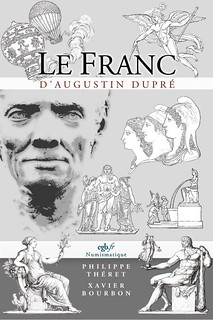 Laurent Schmitt writes:
Laurent Schmitt writes:
"Next year, I will be in New York in January 2024 for the New York International Numismatic Convention (NYINC). During the show I will present a talk on behalf of Philippe Théret and Xavier Bourbon on Dupré's work with the United States of America, Friday in the Morgan suite, 1 to 2 PM: "New Discoveries on Dupré's Medals for the United States".
Philippe and Xavier are the authors of a book : LE FRANC, DUPRÉ published in 2021."
For more information on the New York International, see:
New York International Numismatic Convention
(https://nyinc.info/)
https://nyinc.info/events/
Sounds like a must-see event for those attending the show. Mark your calendars today! -Editor
To read the earlier E-Sylum article, see:
NEW BOOK: LE FRANC D'AUGUSTIN DUPRÉ
(https://www.coinbooks.org/v25/esylum_v25n03a05.html)
Riddle Me This
Gary Beals of Lakeside, California writes:
"At Thanksgiving dinner my 9-year-old great grandson was tossing out riddles to the family. He asked me: What has a head, a tail but no body? I had no idea.
"Answer: A coin.
"As someone with his nose in numismatics since 1958 you would think I would have known that one. Never heard it before. Happy Holidays."
Well, piedforts aside, coins do have a body, just a really, really short one. Good riddle nevertheless. Thanks. -Editor
THE TOKEN CORRESPONDING SOCIETY
Julia Casey writes:
"I'm a member of the Conder Token Collectors Club. As part of that membership, I received a lovely gift of a free electronic copy of the Token Corresponding Society Bulletin published by their UK sister club. I spoke to President Jeff Rock in Baltimore last week and told him how much I enjoyed the article by Andrew Wager in the September issue "A Bristol Convict Token of 1830 from a Local Workshop." "
Jeff Rock adds these notes. -Editor
The Conder Token Collectors Club, a club for collectors of the 18th century provisional tokens struck in or for England, Wales, Scotland, and Ireland is known to many American collectors - though it has members in England, Europe, Australia, and even Asia. Recently, CTCC members have received a free added bonus with their membership: digital editions of the Token Corresponding Society Bulletin, which is a sister club of sorts.
The Token Corresponding Society is based in the UK, and covers all token issues - from medieval leaden tokens to 21st century issues, and everything in-between, with it's main focus being on the heavy token issuing periods of the 17th, 18th, and 19th centuries. While mainly focused on tokens of the UK, the Society does cover world tokens, including those of the United States. The two clubs have agreed to give their members digital PDF's of the other club's publications, as they are issued, in the hopes of making more collectors aware of the fine articles found in both the Conder Token Collector's Journal and the Token Corresponding Society Bulletin.
More information on the Token Corresponding Society and the annual Token Congress can be found on their website at: https://thetokensociety.org.uk/
Information on the Conder Token Collectors Club can be found on their website at: https://ctcc.info/
Thanks, everyone. -Editor
To read an earlier E-Sylum article, see:
AUSTRALIA ISSUES CONVICT LOVE TOKENS
COINS
(https://www.coinbooks.org/esylum_v19n15a36.html)
ROMAN REPUBLICAN DIE PROJECT CONFERENCE
The American Numismatic Society the fourth phase of the Roman Republican Die Project together with a conference on the topic. Here's the press release. -Editor
The Roman Republican Die Project (RRDP), which seeks to create a digital repository of Roman republican coin dies based on the archive of Dr. Richard Schaefer, is excited to announce the fourth phase of work sponsored by a generous grant from the Arete Foundation. The primary goal of this final phase is to demonstrate how RRDP informs current scholarship and encourages new research collaborations. The two-year grant will fund the full-time work of the lead researcher, Dr. Alice Sharpless, on the project through the American Numismatic Society until June 2025. The Arete Foundation has provided additional funding to bring leading scholars together at a conference hosted by the American Academy in Rome (AAR) from April 9-11, 2025. The conference will culminate with an open-access volume of the Supplements to the Memoirs of the American Academy in Rome (SMAAR).
RRDP relies on the foundational research of Schaefer, who has compiled a significant archive of over 300,000 images of Roman republican coins he identified by die. While Schaefer's materials are now publicly available through ARCHER, the ANS's archival database, RRDP aims to make his work accessible to researchers through a searchable, linked open data die database (RRDP) and specimen database (SITNAM), which are in turn linked to Coins of the Roman Republic Online (CRRO). The integrated database provides an essential tool for future research, including understanding the connection between military and domestic projects and monetary production, and evaluating the accuracy of ancient sources on these subjects. The project will also facilitate further research on the scale of Roman coin production in comparison to other contemporary coinages, especially in the Greek East, and the reliability (or not) of Michael Crawford's production estimates based on hoard counts in his well-known and standard catalog, Roman Republican Coinage (Cambridge, 1974).
The conference at the American Academy in Rome aims to expand the scope of the project, which has in previous phases focused on control-marked coinage and issues from the period 95-75 BCE, and to showcase potential methods of using RRDP for other scholarly research. RRDP has invited conference participants to submit requests for specific Roman republican issues to be processed: over the next sixteen months, selected issues will be transcribed and the data will be shared through the project's databases. The conference participants will share their original research on these issues utilizing the data provided by RRDP.
A final conference program will be published in late 2024: confirmed speakers include Richard Schaefer, Seth Bernard, Andrew Burnett, Kevin Butcher, Alberto Campana, Pierluigi Debernardi, Claudia Devoto, Elizabeth Heintges, Wilhelm Hollstein, Fleur Kemmers, Roberto Lippi, Kris Lockyear, Andrew McCabe, Guillaume Méritens de Villeneuve, Charles Parisot-Sillon, Annalisa Polosa, Matthew Ponting, Mariangela Puglisi, Clare Rowan, Marleen Termeer, Lucia F. Carbone, Liv Mariah Yarrow, and Alice Sharpless. Researchers interested in receiving regular updates can contact Alice Sharpless at asharpless@numismatics.org to be added to the conference mailing list.
Links:
Roman Republican Die Project
(https://numismatics.org/rrdp/)
Coinage of the Roman Republic Online
(https://numismatics.org/crro/)
To read the complete press release, see:
The Roman Republican Die Project Announces Fourth Phase and Conference
(https://numismatics.org/the-roman-republican-die-project-announces-fourth-phase-and-conference/)
ANA SEEKS 2024 AWARD NOMINATIONS
The ANA is seeking nominations for 2024 awards and Numismatic Hall of Fame "Historic Era" candidates. Here's the announcement. -Editor
Deadline for Award Nominations is January 15
Each year, the American Numismatic Association (ANA) presents awards to deserving individuals in recognition of outstanding dedication to numismatics. The ANA is now accepting individual nominations for 2024 awards and Numismatic Hall of Fame "Historic Era" candidates.
All nominations can be submitted in writing and online – 300 words or more for the Numismatic Hall of Fame, and 50-100 words for all other awards. Include the date of submission, the nominee's name, background information and birth date (if known). Nominations are accepted through January 15, 2024.
- Numismatic Hall of Fame – "Historic Era" nominees (individuals deceased more than 25 years prior to induction) will be considered. Candidates are not required to be past ANA members.
- Chester L. Krause Memorial Distinguished Service Award – The ANA's highest honor, this award recognizes years of outstanding, dedicated service to numismatics.
- Lifetime Achievement Award – Presented to an individual, family, firm or judicial entity for contributions to organized numismatics. Nominees need not be ANA members.
- Numismatist of the Year – Recognizes individuals within the numismatic community who have demonstrated long-term leadership in the field and to the ANA. Nominees need not be ANA members.
- Elvira Clain-Stefanelli Memorial Award for Achievement in Numismatics – This award honors women who have significantly influenced numismatics, particularly in the areas of scholarship, leadership and/or mentorship. Nominees must be living but need not be ANA members or currently active in numismatics.
- Harry J. Forman Dealer of the Year Award – Honors professional numismatists who exhibit uncommon dedication to strengthening the hobby and the ANA, and display exemplary ethical standards as a numismatic dealer.
- Numismatic Art Award for Excellence in Medallic Sculpture – The award honors an artist whose cumulative lifetime achievements in the field of medallic sculpture have been of the highest order. Medal of Merit – This award recognizes collectors and hobbyists at the regional and/or national level. Nominees dedicate their efforts to promoting numismatics among the general public, and directly support the ANA's mission and programs.
- Adna G. Wilde Jr. Memorial Award for Exemplary Service – Recognizes collectors and hobbyists who are active at the regional and/or national level and work to advance numismatic knowledge among the general public.
- Glenn Smedley Memorial Award – Recognizes collectors and hobbyists active at the grassroots level.
- Lawrence J. Gentile, Sr. Memorial Award for Outstanding Adult Advisor –Recognizes individuals who have devoted their time and efforts to recruiting young numismatists new to the hobby, and aiding the development of intermediate to advanced YNs.
- Young Numismatist of the Year – Honors numismatists under the age of 18 for outstanding contributions to the hobby and who are active in volunteer service and numismatic research.
- Outstanding District Representative – Recognizes the District Representative who most fully promotes coin collecting, coin clubs and the ANA.
Submit a nomination for a numismatist you find deserving of an award. Information about each of the awards and online submission forms can be found at money.org/service-award-categories.
For questions about the awards, please contact awards@money.org or call (719) 482-981.
For more information, see:
ANA Service Awards
(https://www.money.org/american-numismatic-association-awards/)
Awards Categories and Nomination Forms
(https://www.money.org/service-awards-categories/)
VOCABULARY TERM: OVAL MEDAL
Here's another entry from Dick Johnson's Encyclopedia of Coin and Medal Terminology. I added a medal image. -Editor
Oval Medal. An ellipsoidal shaped medal. This unusual shape is aesthetically pleasing, more so if the oval shape is meaningful to the subject or topic of the medal, as an oval halo of a religious medal. Struck oval medals are created by striking within special collars, or by the use of special trimming dies; cast medals can easily be made in oval shape. Among oval medals vertical ovals are slightly more popular than horizontal. Most cameo medals are likely oval in shape; oval medals makes excellent pendant medals.
Oval die problem. Oval medals present somewhat of a problem to the diesinker, engraver or sculptor not present in round medals, in that the shape of the obverse must exactly match that of the reverse (the contour of the oval is not too round or too narrow). This can easily be resolved in modeling by preparing two background plates or basins of the exact congruent and matching shape before building up the relief. See modeling.
Oval Indian Peace medals. The first American Indian Peace Medals, bearing the standing figure of George Washington, were all oval shaped. These hand engraved medals were probably designed this way for their intended purpose of being pendants to be worn by American Indian chiefs as recipients.
Beginning in 1879, when the United States Mint created a series of struck Indian Peace Medals, five of these retained the oval shape (IP-43 through IP-47). All others in the series were round. The oval shape required all pieces to be struck with oval collar dies used with oval collars (an innovation of the U.S. Mint in 1879).
Modified ovals. If a vertical oval has one pointed end, shaped like an almond, it is called a mandorla. If it has two pointed ends, it has a name in Latin, vesica piscis. Both of these oval shapes are symbolic for saints, the Virgin Mary, or other religious themes.
Some oval medals were created with a separate wreath usually attached to it afterwards; this was often done in Latin American countries. These were enclosed with a surround, the separate wreath was not in the die but soldered to the medal after both were struck. Oval medals made as pendants and given to wedding guests in 17th century Germany were called gnadenpfennig.
Naming is the first step in knowing. If all you think when you see a tree is, "hey, that's a nice tree," you don't know much about trees. Is it an elm? a pine? maple? birch? bald cypress? sugar maple? sweetgum? red oak? black oak? Dick continues to educate us all on the finer aspects of numismatics - this entry alone introduces at least three other terms: gnadenpfennig, mandorla and vesica piscis. Now I know why so many religious medals are shaped that way. -Editor
To read the complete entry on the Newman Numismatic Portal, see:
Oval Medal
(https://nnp.wustl.edu/library/dictionarydetail/516439)
SHAPERO, DODSON AND THEIR MONEY MUSEUM
Last week we republished John Regitko's article about the Money Museum of the National Bank of Detroit. E-Sylum Feature Writer and American Numismatic Biographies author Pete Smith submitted this dual article on the museum's founder and first curator. Thanks! -Editor
 Nate S. Shapero was born in Detroit on September 27, 1892, the son of Samuel Shapero (1862-1897) and Augusta Metzger (1860-1924). He began working at age 12 as a soda-jerk at Liggett store. He studied pharmacy at Ferris Institute in Big Rapids to receive a Ph.B. degree and earned
money playing the violin.
Nate S. Shapero was born in Detroit on September 27, 1892, the son of Samuel Shapero (1862-1897) and Augusta Metzger (1860-1924). He began working at age 12 as a soda-jerk at Liggett store. He studied pharmacy at Ferris Institute in Big Rapids to receive a Ph.B. degree and earned
money playing the violin.
He served in the Navy as a pharmacist mate during the First World War. In 1918, he opened his first drug store as the Economical Drug Company in Detroit. In October 1931, the company was merged with the Cunningham Drug store.
Nate was married to Ruth Bernstein (1896-1988) on January 27, 1925, and had two children.
He was president of Cunningham Drug Stores with more than a hundred and seventy branches. The company expanded to have its own laundry, to make its own brand of ice cream, and had a photo finishing department. He awarded scholarships for workers to attend Wayne University or the Detroit Institute of Technology.
In 1945, he was chairman of the Michigan War Finance Committee. He was a Dollar-A-Year-Man working for the Treasury Department selling bonds and stamps.
Shapero gave financial support and leadership to many charitable organizations. He served as president of the Board of Fire Commissioners of Detroit; Past president of Chaim Weizmann Chemical Research Foundation of Rehoboth, Palestine; Board member for Ferris Institute, Big Rapids, Michigan; board member and vice-president of Jewish Welfare Federation of Detroit; board member of National Institute of Distribution, New York; member of Great Lakes Tide-Water Commission; board member of Boy's Club of Detroit; past president of National Association of Chain Drug Stores; executive committee of Detroit Round Table of Christians and Jews; Chairman of National Chain Stores' Section of all U. S. Bond and Stamp campaigns; board member of Temple Beth El.; chairman of Michigan Chain Stores Association; board member of Detroit Community fund; board member of Boy Scouts council; board member of Supervisors of Wayne County; past president of Michigan State Welfare Commission; chairman of the board of Police and Fire Pension Committee; advisory committee member of American Jewish Committee; member of Michigan Crippled Children's Commission; executive committee member of American Retail Federation; member of Allied Industry Committee; and advisory committee member of Fact-Finding Committee for Detroit's World's Fair.
On January 17, 1959, Shapiro was in a plane that caught fire shortly after take-off from Miami. There were no fatalities.
His business interest and philanthropy got him a position as director of the National Bank of Detroit. Parts of his extensive coin collection, formed over forty years, were donated to the National Bank of Detroit to create their Money Museum. Oscar Dodson was hired to be their first director.
In 1964, Wayne State University opened the Shapero Hall of Pharmacy just a dozen blocks from the location of his first store.
He endowed the Belle Isle Monkey Theater and the Shapiro School of Practical Nursing at Sinai Hospital.
During his lifetime, he made more than $20 million in charitable contributions. He died in a hospital in Palm Beach, Florida, on January 23, 1980. He is buried with Ruth at Clover Hill Park Cemetery in Birmingham, Michigan.
A headstone is not an official document. His headstone gives his name as Nate S. Shapero, his date of birth as Sep. 27, 1892, his date of death as Jan. 23, 1980. Let's assume that is all correct.
The FamilySearch site has 19 records linked under the name of Nathaniel Samuel Shapero. Not one of those records gives his name as Nathaniel.
The Detroit Jewish News for September 27, 1957, tells this story: The middle initial of his name has an interesting origin. Basketball was his favorite sport as a youngster. A Windsor team constantly beat a Detroit team, four of whose players were named
Sam.
When the young Shapero was asked to play with the Detroiters in a crucial game with the Border City team, he, too, was labeled Sam.
His Detroit team won the game. Since then, the S
has symbolized Shapero's success in countless endeavors. His World War I draft registration card gives his year of birth as 1890 as does his Veteran's Affairs card. I have heard about 16-year-olds lying to get into the Navy but not a 25-year-old.
The Find-a-grave site gives his year of death as 1990. I assume this is a clerical error.
Biographical sources are subject to errors and should be double-checked and verified.
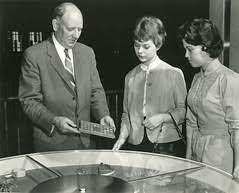 Oscar Dodson was born in Houston, Texas, on January 3, 1905, the son of Dennis Seth Dodson (1877-1959) and Maggie Bounds Sisk Dodson (1878-1918). Dodson graduated from the U. S. Naval Academy in 1927, was commissioned an ensign and assigned to the battleship New York.
Oscar Dodson was born in Houston, Texas, on January 3, 1905, the son of Dennis Seth Dodson (1877-1959) and Maggie Bounds Sisk Dodson (1878-1918). Dodson graduated from the U. S. Naval Academy in 1927, was commissioned an ensign and assigned to the battleship New York.
He married into a navy family on December 17, 1932. His bride was Pauline Wellbrook, the daughter of commander Howard Wellbrook. She was walked down the aisle by Admiral Thomas J. Senn. The couple left the chapel under the crossed swords of officers attending the wedding.
Dodson was communications officer on the USS Hornet during World War II. It was the Hornet that launched planes for the Doolittle raid on Tokyo. The ship was heavily damaged during the Battle of the Santa Cruz Islands, abandoned and sunk. The ship had been in service for just one year and six days. Dodson lost five pounds of coins in his briefcase on the flight deck as the Hornet was abandoned.
On October 26, 1942, The Hornet was attacked by enemy aircraft. An unexploded bomb lodged in a compartment near the communications center. Dodson earned a silver star as noted in the citation, Later, accompanied by a volunteer crew, he entered a compartment containing an unexploded bomb in order to destroy the ship's secret publications.
He was commanding officer of the U.S.S. Thomas Jefferson 1949 to 1950.
Dodson began collecting coins in Waco, Texas at age 13. He joined the ANA on October 1, 1933, as member 4319. He converted to life membership LM-78 in 1945. While still in the Navy, he served on the Assay Commission in 1948, the ANA Board of Governors during 1950 to 1955 and as vice president 1955 to 1957.
Dodson lived for a while in Urbana, Illinois. He received an M.A. in history from the University of Illinois in 1953. During 1950 to 1953, he was a professor of naval science and commander of the Naval Reserve Officers Training Corps at the University of Illinois, He was an assistant professor of history there during 1957 to 1959.
Dodson retired from the Navy as Rear Admiral in June of 1957 after thirty years of service. He then served two terms as president of the ANA August 24, 1957 to August 19, 1961. He received the ANA Medal of Merit in 1950 and the ANA Farran Zerbe Memorial Award in 1968. He was also awarded the Numismatic News Numismatic Ambassador Award in 1988.
Dodson established the Money Museum at the National Bank of Detroit. He was the museum director from 1959 to 1965. The museum opened on April 28, 1960, the first day of the Central States Numismatic Society convention in Detroit. Much of the material in the museum came from the collection of Nate S. Shapero. While at the museum he released Money Tells the Story in 1962.
The Museum was moved to the Renaissance Center in 1977. Dodson left Detroit in 1966 to become director of the Classical and European Culture Museum at the University of Illinois.
Charles Hoskins took over as curator of the museum. He created the Mobile Money Museum in a trailer in 1968. It was taken around to local schools. His assistant was Thomas W. Becker. The Mobile Museum tour was discontinued in 1980. The home office museum closed about 1992.
Dodson died on January 22, 1996, and is buried at Arlington National Cemetery. In 2000, he was inducted into the American Numismatic Association Hall of Fame.
Newspaper articles described the National Bank of Detroit Money Museum as having a rare 1913 Liberty Nickel worth, at the time, $35,000. This is not one of the five known examples.
What did they have, and what happened with it?
How many money museums have there been in the United States? How many are still open? How many have you visited? [I've been to five]
Great articles, and two great questions. Can anyone help?
While there have been many numismatic exhibits at conventions and other temporary locations, and exhibits as part of larger museums (such as the National Numismatic Collection at the U.S. Mint and Smithsonian), permanent, separate money museums are less common. I missed out on the National Bank of Detroit Money Museum and the Chase Manhattan Bank Money Museum, but did manage to visit Eric Newman's St. Louis Mercantile Money Museum. -Editor
To read the earlier E-Sylum article, see:
MONEY MUSEUM OF THE NATIONAL BANK OF DETROIT
(https://www.coinbooks.org/v26/esylum_v26n47a14.html)
CHASE MANHATTAN MUSEUM BRENNER EXHIBIT
Speaking of the Chase Manhattan Bank Money Museum, former curator Gene Hessler recalls an exhibit he assembled of Victor David Brenner's work. He passed along scans of a circa 1971 Coin World story. Impressive gathering of material - and numismatic personalities; pictured are Chief Engraver Frank Gasparro, Gene, Dick Johnson, and Irwin Stoff. -Editor
COL. GREEN AND THE INVERTED JENNYS
Dave Schenkman writes:
"Your mention of the Inverted Jenny stamp in the latest E-Sylum reminded me of a column I wrote for The Numismatist several years ago. Col. Green, who owned all five 1913 Liberty Head Nickels, also owned a full sheet of the stamps."
Thanks. Nothing exceeds like excess! Dave passed along the article, and here's an excerpt. -Editor
 I don't collect ship medals, but when this one was offered on an Internet auction site I couldn't
resist purchasing it. It wasn't the medal itself that attracted me, but the wording on the inside of the
small cardboard box: COMPLIMENTS OF COLONEL E. H. R. GREEN. If you don't recognize this name, open
your
I don't collect ship medals, but when this one was offered on an Internet auction site I couldn't
resist purchasing it. It wasn't the medal itself that attracted me, but the wording on the inside of the
small cardboard box: COMPLIMENTS OF COLONEL E. H. R. GREEN. If you don't recognize this name, open
your Red Book
and you'll find it in the introduction to Liberty nickels. Green, who was described by
Dave Bowers in Adventures with Rare Coins as one of the most colorful figures in American
numismatics,
is immortalized in our hobby because at one time he owned all five of the famous 1913
nickels.
Edward Howland Robinson "Ned" Green, best known as Colonel Green, was born on August 22,
1868. His mother was Hetty Green, a very successful businesswoman who was known as The Witch of
Wall Street.
Although she amassed an immense fortune, she was extremely tight-fisted and was a
frequent topic of discussions in financial circles. According to one story, when her son suffered a broken
leg she took him to a charity hospital. She was recognized, and when payment was requested in advance
she decided to treat him herself. As a result, Edward's leg eventually had to be amputated.
When Hetty died in 1916, Colonel Green inherited between 100 and 200 million dollars. He was the exact opposite of his mother, and was not at all reluctant to spend his money. Lavish parties were frequently hosted at his Round Hill mansion in South Dartmouth, Massachusetts, which he had built in 1921 at a cost of 1.5 million dollars.
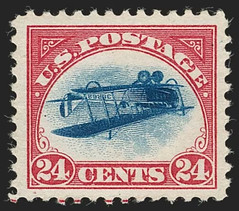 The Colonel was an avid stamp and coin collector, and after his death in 1936 his collections
were valued at well over eight million dollars. His collection of stamps was considered one of the finest
of his time and Green is immortalized in that hobby for his ownership of the only known sheet of
Inverted Jenny stamps, which he purchased in 1921 for $20,000. Depicting a Curtiss JN-4 airplane upside
down, they are undoubtedly the best-known and most desirable stamp errors of all time. He broke up
the sheet and placed one of them in a locket for his wife. In 2007 a single stamp from the sheet sold for
nearly a million dollars.
The Colonel was an avid stamp and coin collector, and after his death in 1936 his collections
were valued at well over eight million dollars. His collection of stamps was considered one of the finest
of his time and Green is immortalized in that hobby for his ownership of the only known sheet of
Inverted Jenny stamps, which he purchased in 1921 for $20,000. Depicting a Curtiss JN-4 airplane upside
down, they are undoubtedly the best-known and most desirable stamp errors of all time. He broke up
the sheet and placed one of them in a locket for his wife. In 2007 a single stamp from the sheet sold for
nearly a million dollars.
Where is that locket stamp today? Which position in the original sheet was it? As noted last week, a Seigel Auction Galleries webpage digitally reconstructs the original sheet with the provenance of each stamp. I haven't clicked all the links, but it might be a fun exercise for a reader. -Editor
For the reconstructed ‘Inverted Jenny' sheet, see:
https://invertedjenny.com/salerecords
To read the complete article, see:
‘INVERTED JENNY' STAMP BRINGS $2 MILLION
(https://www.coinbooks.org/v26/esylum_v26n47a31.html)
DAVID SCHENKMAN INTERVIEW, PART FOUR
Greg Bennick's latest interview for the Newman Numismatic Portal is with token expert David Schenkman. Here's the fourth of six parts, where Dave discusses underappreciated rarities. -Editor
Greg Bennick: I just love the fact that these things spoke from history and spoke with history in the modern day. So, do you specialize, would you say, most in tokens and medals as I think you do, or is it also counterstamps? Is it also the Civil War tokens? I mean are you sort of a master and jack of all trades, as it were, or do you find yourself specializing in one of those areas?
 David Schenkman: I don't consider myself a master of anything. I don't collect Civil War
tokens, although I have some. I collect information about them. I've collected a lot of things
over the years, including counterstamps, which I no longer collect, but I tend to lose interest in a
topic after I write a book about it. (laughter) And so I've sold several collections over the years.
You termed counter stamps as a last frontier or one of them, and that's very true. I consider two
of the most unappreciated areas of tokens right now: two types of tokens that were issued for
very short periods of time, not long after the Civil War. And I'll tell you why I consider them so
underrated.
David Schenkman: I don't consider myself a master of anything. I don't collect Civil War
tokens, although I have some. I collect information about them. I've collected a lot of things
over the years, including counterstamps, which I no longer collect, but I tend to lose interest in a
topic after I write a book about it. (laughter) And so I've sold several collections over the years.
You termed counter stamps as a last frontier or one of them, and that's very true. I consider two
of the most unappreciated areas of tokens right now: two types of tokens that were issued for
very short periods of time, not long after the Civil War. And I'll tell you why I consider them so
underrated.
One of these two types is the hard rubber token. Tokens were made of hard rubber, primarily from the Civil War years through the early 1880s. They were not struck, they were made in presses; it's kind of like a waffle iron type thing, and they hold up very well. And I cataloged those a number of years ago, and there's only a few hundred known ones. And every once in a while, an unlisted one pops up, but not very often. But these tokens are very under collected. And I think one of the reasons why is that you have to buy a book to know what you're doing with them. And so, people don't tend to want to spend the money for a book if they only have one or two of the tokens.
The same thing holds true of embossed shell cards, and that's a series that was made from 1868 through the late 1870s for the most part. It consists of two pieces, generally embossed brass on one side with something resembling either a twenty dollar gold piece or a seated dollar, and the other side would have an advertisement of a merchant. And these were usually a little bigger than a half dollar and smaller than a silver dollar. Dave Bowers, a few years ago, wrote a fascinating book about these tokens, a catalog of them giving a lot of historical information. The thing that I find so interesting about these tokens from the standpoint of collecting them is that they sell for a fraction of what civil war tokens of the same rarity sell for.Greg Bennick: Why do you think that is?
David Schenkman: Well Civil War tokens have been collected for a lot longer. There's an organization of civil war token collectors, and there have been catalogs out for a long time.
Greg Bennick: So, it gives people a frame of reference, much like I was saying before, that if a variety becomes Red Book official, all of a sudden it's collectible. Whereas beforehand maybe perhaps not.
David Schenkman: True, Civil War tokens can bring huge money. And the ones that a lot of times bring the highest prices are the ones that really aren't legitimate, they were made for collectors. But you know, to each his own. I find it interesting that Civil War tokens will invariably bring a lot more money than political tokens with, say, Lincoln campaign tokens, which are generally rarer, but they're not as collected.
Greg Bennick: There's only a small number of people who collect something. Even if there's only 15 of them, then there are more than the number of collectors who want them. If there's only five collectors who want them, that means there's three per collector and all of a sudden the desirability goes down in a way. So hopefully there'll be more collectors of these hard rubber tokens. And what was the other, encased store cards?
David Schenkman: Embossed shell cards. If you happen to pick up a copy of that book, the Token Metal Society published it, that you'll find it fascinating because it's a lot of information and there are historical information for the pieces. Dave Bowers, of course, does a wonderful job with series like that. A number of years ago I published several books on tokens myself, and I published the Hard Rubber Token book myself. I published it knowing that I was going to lose money with it because it was an expensive book and cost a lot to do, but I didn't care, I just wanted to do it.
 But a man came to me not too long after that who had written a book on tax
tokens. Now tax tokens generally you can buy a handful of them for a dollar. They're very low
value things, but for the most part there are better ones. But he wanted to know if I would be
interested in publishing the book. And I said,
But a man came to me not too long after that who had written a book on tax
tokens. Now tax tokens generally you can buy a handful of them for a dollar. They're very low
value things, but for the most part there are better ones. But he wanted to know if I would be
interested in publishing the book. And I said, Well how big is it?
He said it was 400 pages. I
was thinking, My God, this book is going to cost more than any tax token that's listed in it!
I
looked at the manuscript and he had done a really nice job with it. And so, I published it along
with Paul Cunningham a token dealer, and we published it. And the interesting thing about the
book was that Paul had a relationship with a printer that we had 90 days to pay the bill I believe.
We had sold enough copies to pay the whole printing cost before the 90 days was up. And yet
people don't buy books like the hard rubber book very easily and the shell card book and others
like it. And I think the difference is most collectors have a handful of tax tokens and they try to
know if they're good ones or bad ones. And on the other hand, very few people, unless they're
collectors, have hard rubber tokens or shell cards or other series like that, or counterstamps for
that matter.
Greg Bennick: That makes sense. Now is the book US Shell Cards 1867 to 1880? Is that the book we're talking about?
David Schenkman: Yeah, I think so, yes.
Greg Bennick: Yeah, I just looked it up. So that looks definitely interesting. I personally love buying books even on things that I don't know anything about, just because it is always fun to pull something off the shelf and then learn about something brand new. I want to make sure before I forget to let people know that the Token and Medal society, if you look up tokenandmetal.org, you're going to find information on the Token and Medal society. And then also I just want to make sure to put in a good word for the Civil War token society. People can simply Google them. I think it's CWTS society. I have to do a double check just to make sure, I don't want to give the wrong reference, but the Civil War Token Society and Token and Metal Society, great places to start to learn about these endless frontiers essentially of areas of numismatics which aren't as popular perhaps as Lincoln cents and Morgan dollars certainly. Not to disparage Lincoln cent and Morgan dollar collectors because there's lots of them, and they're fun too. But these are definitely areas that are fringe in a way when you take the whole spectrum of popular numismatics to consideration.
David Schenkman: That's very true. And by the way, it is CWTSociety.com .
Greg Bennick: There we go, perfect. Thank you.
David Schenkman: And they publish the quarterly magazine that's excellent also. And recently I persuaded them to change the name of the magazine from the Civil War Token Journal I believe it was to Civil War Era Numismatics and my feeling was that opening it up to articles other than strictly Civil War tokens, so people can write articles now and have them published. - for instance - I wrote an article on Grand Army of the Republic Encampment medals, which are all post-Civil War, but there were organizations that Civil War veterans joined. And so things like political tokens and other types of tokens other than strictly Civil War tokens are now included. So they've been around for a long time also. And again, it's well worth the nominal dues.
Greg Bennick: It's great. And one thing I do want to throw out there as well to listeners is that joining an organization is important and great. Contributing to an organization really deepens the experience. And I know that when I started writing for Errorscope about error coins, for example, I started to get feedback and it was fun. And you start to build friendships and connections and community. So, I'd suggest if someone was to join, for example, Token and Medal Society or The Civil War Token Society, consider writing an article even as a beginner. Consider writing an article and submit it and then get some advice on writing and contributing because, the more one contributes, the hobby grows, of course, but also it's more fun. You start to build community that way, and I'm sure that you've found that to be true. You've been writing articles for organizations and for magazines across the board for decades at this point.
David Schenkman: A lot of decades, I guess! (laughter) And the Token and Medal Society magazine, we have an editor now, Greg Burns, who does a wonderful job, and he will assist anybody. If a person's not confident of their ability to write an article, he will help and I would help anybody that was interested in doing something like that. I think there are a lot of other people that would help also. So, it's a smaller society than the coin collecting society and people tend to know each other more.
Greg Bennick: I hope that all this comes across as encouragement for either new collectors or seasoned collectors to get even more involved. I think that the stronger our connections are to one another, the more fun ultimately that we all have. So I wanted to ask you a couple of things. You know, you taught at summer seminar, the ANA summer seminar for many years. I was going to ask, what did you teach at the ANA summer seminar?
David Schenkman: I taught a class in US tokens and I taught for 18 years and most of the years was that. But I taught several years on the subject of Civil War era numismatics and I had co-instructors with that. I did tokens, medals, badges, things of that sort. And Wendell Wolka, who is a paper money specialist, did paper money, and we did that for a few years. I had a lot of fun with it. That's a wonderful place to go for the summer. And people tend to come back year after year, which says that they're enjoying it. Whether you're collecting tokens, medals or numismatic literature, there are courses in that every year. They still have it. I don't know if they have a token course or a Civil War course anymore, but they might. And if you get knowledgeable enough you could teach one. They were always looking for knowledgeable instructors. I think that when you get involved with things like tokens and medals, you tend to find things to keep branching out to.
One thing leads into another. For instance, I started collecting coal mine tokens issued by the coal mines, scrip, in the sixties. And I still do, but eventually I branched out to collecting obsolete paper money issued by coal mines, which is quite a bit rarer in many cases because paper being fragile. And I just finished a book which hopefully will get published this year, a catalog of paper coal mine notes from the 19th century.
Greg Bennick: Well, since you brought it up, tell us a little bit about these coal mining tokens. What were they? Were they for use say, in a company store, that sort of thing. And then the obsolete paper money connected to the coal mines as well. Tell us about that as well.
David Schenkman: Well, there's a song: Saint Peter, don't call me because I can't come. I
owe my soul to the company store.
I think Tennessee Ernie Ford made a hit out of that. Yeah,
you load 16 tons and what do you get
, that song?
Greg Bennick: Yeah, another day older and deeper in debt
.
David Schenkman: Yes. And that pretty well describes them. Coal mines were generally in
pretty isolated areas, and in many cases, the coal company owned virtually the whole town.
They built the town around the mines and they would build inexpensive homes for the miners,
which they would rent to them and they would build churches. And of course, they built stores
that the company owned, and they sold pretty much anything you might want, housing items,
you name it, at prices that often were quite a bit higher than they might be at another store. Coal
miners generally were paid every two weeks, and when you started working, the first pay was
withheld. So by the time a miner got paid, he might have run out of money before then and need
to borrow from the company. And the way the loans would be made would be in scrip, which
would be only spendable at the company store. So, the tokens would have the name of the coal
mine on them and the other side would say Good for $0.05 in trade
or Good for $0.50 in
merchandise
, whatever and that's what the scrip was. And you could redeem them on payday
usually, but they weren't often redeemed because they would be spent. So it made bookkeeping
simple also because the person could sign a check or draft an IOU, in effect, for the amount of
money they borrowed. And then on payday it would be deducted from his pay. I researched and
textile industries used them in the South extensively also, and it was used the same way. And I
wrote an article a number of years ago about those and researched it. And I found that people
sometimes never saw U.S. money for years! And as one textile worker expressed, as well as I
can remember, ‘well the store has everything we need and our rent's taken out of our pay, so we
really don't need money.'
Greg Bennick: Wow. So basically, the company would own not just the work time of the worker, but basically the life and commerce and everything of the worker. It would be this all inclusive experience. I shouldn't even say all inclusive. It makes it sound like working in a coal mine was a resort in the Bahamas, but it's more that it was an all-consuming in a sense experience where the workers didn't need to do anything beyond the coal mine and its store and its world, essentially. That's pretty fascinating. I had no idea.
David Schenkman: Well, in the late 19th century and early first part of the 20th century, they couldn't do anything because these mines were generally in fairly isolated areas. The roads weren't good. Most of the miners couldn't afford to buy cars, so they had no alternative. they pretty much had to buy at the company store. So, there's been records of mines that have actually, in some cases, made more money with their stores than they did from the mines.
Greg Bennick: Specifically, coal mines? Were gold mines or silver mines included as well out west?
David Schenkman: Yes, to a much lesser extent. To give you an idea of the scope of this, there's two volumes of the coal mine token catalog. And between the two volumes, I think there's probably well over 15,000 varieties listed. Now, bear in mind that some companies issued maybe they see 10, 15 different varieties and denominations, but still, that's a lot of tokens.
Greg Bennick: Yeah, I mean, endless. And like you said, you're never going to be able to collect them all essentially. You're going to be always on the search and maybe finding new things. But the idea of finding 15,000, there's probably very few people who would have the wherewithal, the luck, the fortune to be able to do that. Even if those 15,000 items were collectible, maybe there's only one of each. As you mentioned, some of these things might be quite rare.
David Schenkman: Some of them are very rare.
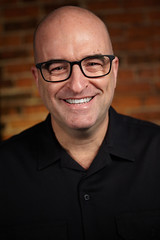 About the Interviewer
About the Interviewer
Greg Bennick (www.gregbennick.com) is a keynote speaker and long time coin collector with a focus on major mint error coins. Have ideas for other interviewees? Contact him anytime on the web or via instagram @minterrors.
To watch the complete video, see:
David Schenkman Interview
(https://nnp.wustl.edu/library/book/632911)
To read the complete transcript, see:
David Schenkman Interview (Transcript)
(https://nnp.wustl.edu/library/book/632910)
To read the earlier E-Sylum articles, see:
DAVID SCHENKMAN INTERVIEW, PART ONE
(https://www.coinbooks.org/v26/esylum_v26n45a12.html)
DAVID SCHENKMAN INTERVIEW, PART TWO
(https://www.coinbooks.org/v26/esylum_v26n46a16.html)
DAVID SCHENKMAN INTERVIEW, PART THREE
(https://www.coinbooks.org/v26/esylum_v26n47a19.html)
CIRCA 1981 ANACS GRADING CERTIFICATES
Pittsburgh coin dealer Eddie Lowy posted on Facebook photos of two circa 1981 ANACS grading certificates issued to the Steve Ivy Rare Coin Co. Great hobby history. -Editor
To read the Facebook post, see:
https://www.facebook.com/story.php?story_fbid=10226682296826109&id=1309147041
DAVISSONS E-AUCTION 48: ROMAN PORTRAITS
Davisson's Ltd. published an email to clients this week highlighting several Roman portrait coins in their upcoming sale. Great coins! -Editor
E-Auction 48 closes in two weeks, on Wednesday, December 6th!
The selection of fine Roman portraits featured in our ancient section is in large part a continuation of the collection offered in our last sale – one carefully assembled by a long-time collector and client with an eye for artistry and quality. With the help of another fine consignment, we are offering examples from a significant portion of post-Severan Roman rulers.
A few examples are pictured below, but to survey the entire selection of great portraits be sure to peruse the entire Roman offering. And stay tuned! We will be back after the holiday with highlights from the rest of the sale.
For more information, or to bid, see:
The entire Roman offering
(https://davcoin.com/sale/E-Auction%2048?rpp=120&f%5B0%
5D=im_field_category%3A8&f%5B1%5D=im_field_category%3A7&f%5B2%
5D=im_field_category%3A9&f%5B3%5D=im_field_category%3A28)
E-Auction 48
(https://davcoin.com/sale/E-Auction%2048)
To read the earlier E-Sylum article, see:
DAVISSONS E-AUCTION 48
(https://www.coinbooks.org/v26/esylum_v26n46a21.html)
THE BOOK BAZARRE
WAYNE'S NUMISMATIC DIARY: NOVEMBER 26, 2023
On Tuesday, November 21, 2023 I left work and drove through a rainstorm and rush-hour traffic to J. Gilbert's Steakhouse in McLean, VA for the latest dinner of my Northern Virginia numismatic social group, Nummis Nova. Roger Burdette was our host and we had a small room at the front of the restaurant. It was soon filled with me and Roger, Robert Hoppensteadt, Jon Radel, Wayne Herndon, my guest Jonas Denenberg, Lorne LaVertu, Mike Packard, Chris Neuzil, Steve Bishop, and last but not least, Julian Leidman.
Regulars Eric Schena, Tom Kays and Dave Schenkman had come down with colds and were unable to attend.
It was a really tight room and I was hemmed in and didn't get an opportunity to stand and take our usual group photo. But here are some shots I took on the way out. Nice place. No numismatic artwork, but how about some nice stamps?
An Unusual Star Note
At the recent Whitman Baltimore Expo I told Mike Packard I owed him a "prize" for being the first numismatist I'd run into at the show. This was it - dollar bill I'd found with ink doodles including two stars.
To read the earlier E-Sylum article, see:
WAYNE'S NUMISMATIC DIARY: NOVEMBER 12, 2023, PART 2 : An Unusual Star Note
(https://www.coinbooks.org/v26/esylum_v26n46a24.html)
Levin Messick's Julian Liedman Story
First, a digression before getting back to our dinner.
The day before our meeting I shared with Julian a story Lev Messick asked me to pass to him along with his thanks for a kindness years ago.
Lev writes:
I enjoyed reading the conversation with Mr. Gillio. It brought back a great memory. When I got out of high school, I spent 6 years in the Navy, 23+ months in Vietnam. I married and left the Navy and my wife and I had our first child. I worked for Texaco at the time. During my years, in the Navy, I did pick up coins and banknotes from all the places I visited. I had collected an obsolete bank note from my home town as well.
After my service, I was not an active participant in the hobby until one day when my wife saw an ad for the Long Beach Coin Show. She suggested that we should go and relax and enjoy. To make a long story short I stopped at Julian Liedman's table. He was from Maryland (Western Shore) and I am an Eastern Shoreman. You can take the shoreman from the shore but not take the shore from the shoreman.
Anyway, Julian had a beautiful display of U.S. Commemorative coins. I fell in love with them and wanted to buy several. I did not have enough money for them and had not brought a checkbook. I asked if he could hold them for me and I would come back the next day with the money. He said no, I can look at you and know you are honest. He insisted that I take the coins and pay him later. Well for me later was a quick 60 -mile round trip to bring him the money the same day.
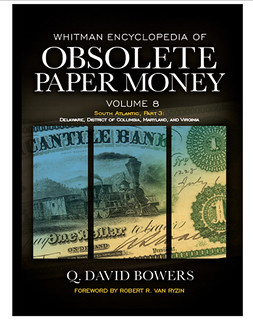 He got me interested in collecting again and it has become a lifetime addiction. I have since been active in collecting, research, and editing for two nice obsolete Maryland banknote books. Money and Banking in Maryland by Kelly, et al. and I was also the Maryland editor of Volume 8 of the Whitman Encyclopedia of Obsolete Paper Money. Yes, I know I live in California but I have collected Maryland obsolete notes for nearly 50 years. I am also a historian -thus a trained researcher.
He got me interested in collecting again and it has become a lifetime addiction. I have since been active in collecting, research, and editing for two nice obsolete Maryland banknote books. Money and Banking in Maryland by Kelly, et al. and I was also the Maryland editor of Volume 8 of the Whitman Encyclopedia of Obsolete Paper Money. Yes, I know I live in California but I have collected Maryland obsolete notes for nearly 50 years. I am also a historian -thus a trained researcher.
To read the earlier E-Sylum article, see:
RON GILLIO INTERVIEW, PART FOUR
(https://www.coinbooks.org/v26/esylum_v26n44a14.html)
Great story! It's what you gotta love about this hobby. People are friendly and willing to help fellow hobbyists. I'm grateful myself to a dealer and a fellow collector who each let me acquire a rare piece and make monthly payments on the purchase - and a numismatic mentor who lent me cash to purchase a large numismatic library years ago.
Whitman Encyclopedia of Obsolete Paper Money
Second digression - a reader had earlier reached out to ask about the status of the Whitman Encyclopedia of Obsolete Paper Money, and I got welcome news from publisher Dennis Tucker.
Rev. Stephen Knapp writes:
"What can you tell us about the future of the projected additional volumes of the Encyclopedia of Obsolete Paper Currency under the editorship of Q. David Bowers that Whitman was producing? Has it been scrubbed, shifted to an online resource, or merely delayed a bit to be resumed down the road?"
Dennis Tucker writes:
"Whitman has been steadily working on volumes 9 and above of the obsolete paper-money encyclopedia. Pennsylvania and New Jersey are the states next in line. This work has continued through the recent acquisition, and is proceeding as we speak. New York is shaping up to be a multiple-volume effort by itself. Specialists on these states and others are welcome to drop me a line!"
Collectors and researchers interested in helping can contact Whitman Publishing at obsoletes@whitman.com.
Rev. Stephen Knapp adds:
"Thank you for looking into this. I am delighted to see the project has not been scrubbed. These books are outstanding."
Caracalla Medallion
OK, back to Tuesday's dinner.
In the ancient department, Robert Hoppensteadt had a great Roman medallion. Quite impressive in hand.
Robert writes:
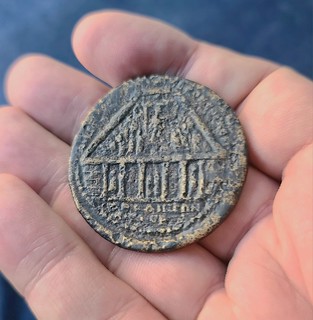 PHRYGIA, Laodicea ad Lycum. Caracalla. AD 198-217. Æ Medallion - 43mm 49 g. L. Aelius Pigres, Asiarch. Struck AD 214-217. Laureate, draped, and cuirassed bust right / ? AI? ?IGPHC ACIAPX G ANETHKEN, • ?AO?IK?ON/N?OKOPON in exergue, emperor standing right on steps of distyle temple, holding wreath in right hand; on either side, pair of togate figures raising hand in acclamation; behind, troops standing, holding shields and spears; all within precinct enclosure, seen from aerial perspective; enclosure entrance composed of six columns; figure of Hygieia, holding serpent, standing in outer intercolumnations; uncertain figures (Pigres and spouse?) standing facing in central intercolumnation. Von Aulock, Phrygiens -; SNG München -; SNG Leypold -; SNG von Aulock -; BMC 227 (same rev. die); Friedlaender and von Sallet 876; SGI 2592 (same dies). An attractive architectural type and extremely rare.
PHRYGIA, Laodicea ad Lycum. Caracalla. AD 198-217. Æ Medallion - 43mm 49 g. L. Aelius Pigres, Asiarch. Struck AD 214-217. Laureate, draped, and cuirassed bust right / ? AI? ?IGPHC ACIAPX G ANETHKEN, • ?AO?IK?ON/N?OKOPON in exergue, emperor standing right on steps of distyle temple, holding wreath in right hand; on either side, pair of togate figures raising hand in acclamation; behind, troops standing, holding shields and spears; all within precinct enclosure, seen from aerial perspective; enclosure entrance composed of six columns; figure of Hygieia, holding serpent, standing in outer intercolumnations; uncertain figures (Pigres and spouse?) standing facing in central intercolumnation. Von Aulock, Phrygiens -; SNG München -; SNG Leypold -; SNG von Aulock -; BMC 227 (same rev. die); Friedlaender and von Sallet 876; SGI 2592 (same dies). An attractive architectural type and extremely rare.
This medallion commemorates an otherwise unknown address of the emperor Caracalla to the leading citizens of Laodicea during that emperor's advance across Asia Minor to meet the Persians. This issue appears to have been struck as a personal dedication of the Asiarch, as evidenced by the reverse legend. (CNG write up)
Prooflike 1822 Half Dollar
"Production of War of 1812 Congressional medals was ramping up in 1818 - 1820, about the time when coins that pass for proofs started to appear. Perhaps the medals - made with reflective fields and frosted relief - inspired experimentation with specimen coins such as the 1822 half from this die pair certified as a proof. The dies were still fresh when this prooflike was struck.
"Add this to the reasons I don't like slabs. You can't appreciate, let alone photograph, a PL in them."
Lorne's Lovelies
Lorne LaVertu had some nice U.S. coins too.
Steve's Beauties
And of course, Steve Bishop can be counted on for some nice newps.
Steve writes:
"I brought a few eBay purchases: a run of proof Indian cents, a few nice Lincoln cents, and some nice Liberty and Buffalo nickels."
Discussion Topics
As usual, discussion topics were all over the map, from numismatics to Adam Sandler films and off-color jokes not fit to publish. There was talk about the recent Baltimore show and potential members moving to or visiting the area. During dinner Wayne Herndon got a text from my daughter - home from college for the holiday, she would put in some hours working at the Wizard Coin Supply warehouse to raise some spending cash. Wayne was wearing a nice Wizard logo shirt - with no merch section on the website, these are available only to the owners and employees.
There was also talk of the generational transition in numismatics. While many old-style clubs and shows are declining, a younger generation is out in force, with opportunities for arbitrage between the two markets, which is just what Jonas Denenberg has been doing - he sells material online that he purchases in person at smaller coin shows around the U.S. Traveling on trains, buses, and subways, he has his hands full bringing his hauls home. With his backpack full on a recent trip, he told us how he carried the rest in two literal bank moneybags on sketchy Philadelphia public transportation. That's grit! Safe travels going forward.
Mike Packard had his own travel trauma that night - after dinner his car had a dead battery and wouldn't start. I stuck around while he phoned for roadside assistance. I headed home and Mike reported later that the assistance arrived on time and got him back on the road as well.
MUSEUM RECLASSIFIES EMPEROR ELAGABALUS
We've touched on this topic before (see the 2018 article linked below). This BBC News article discusses how the North Hertfordshire Museum will now refer to emperor Elagabalus with female pronouns. -Editor
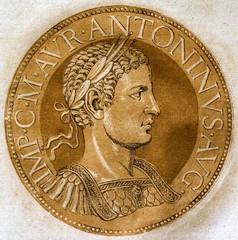 A museum is to relabel its display about a Roman emperor after concluding that he was in fact a trans woman.
A museum is to relabel its display about a Roman emperor after concluding that he was in fact a trans woman.
North Hertfordshire Museum will now refer to emperor Elagabalus with the female pronouns of she and her.
It comes after classical texts claim the emperor once said "call me not Lord, for I am a Lady".
A museum spokesperson said it was "only polite and respectful to be sensitive to identifying pronouns for people in the past".
The museum has one coin of Elagabalus, which is often displayed amongst other LGBTQ+ items in its collection.
The debate over Elagabalus's gender identity is long-standing and often splits academics.
Dr Shushma Malik, a Cambridge university classics professor, told the BBC: "The historians we use to try and understand the life of Elagabalus are extremely hostile towards him, and therefore cannot be taken at face value. We don't have any direct evidence from Elagabalus himself of his own words.
"There are many examples in Roman literature of times where effeminate language and words were used as a way of criticising or weakening a political figure.
"References to Elagabalus wearing makeup, wigs and removing body hair may have been written in order to undermine the unpopular emperor."
Dr Malik added that whilst Romans were aware of gender fluidity, and there are examples of pronouns being changed in literature, it "was usually used in reference to myth and religion, rather than to describe living people".
However, councillor Keith Hoskins, executive member for Enterprise and Arts at North Herts Council, said texts such as Dio's provide evidence "that Elagabalus most definitely preferred the 'she' pronoun and as such this is something we reflect when discussing her in contemporary times, as we believe is standard practice elsewhere".
"We know that Elagabalus identified as a woman and was explicit about which pronouns to use, which shows that pronouns are not a new thing," he added.
To read the complete article, see:
Museum reclassifies Roman emperor as trans woman
(https://www.bbc.com/news/entertainment-arts-67484645)
To read the complete article, see:
Museum reclassifies Roman emperor as trans woman
(https://www.bbc.com/news/entertainment-arts-67484645)
To read the earlier E-Sylum article, see:
QUEER COINS: LGBTQ RULERS THROUGH HISTORY
(https://www.coinbooks.org/v21/esylum_v21n25a29.html)
ROYAL CANADIAN MINT ISSUES CHARLES COINS
The Royal Canadian Mint has issued coins featuring King Charles III. -Editor
It seems the long-forgotten penny is of some use after all. This afternoon, the Royal Canadian Mint announced they'd be bringing back the one-cent coin just so they'd have some place to put the image of King Charles III.
Mennonites, in particular, are looking forward to the new coinage.
I'll finally have some reason to pay close attention to my tip money,
said Winkler waitress Erin Neufeld. With the volume of pennies I receive, I'll be sure to snag a King Charles in no time.
The mint is apparently also thinking of bringing back the half-penny, which they've already reserved for Queen Camilla Parker Bowles.
To read the complete article, see:
Royal Canadian Mint Brings Back the Penny Just to Have Some Place to Put King Charles
(https://www.ungerreview.com/royal-canadian-mint-brings-back-the-penny-just-to-have-some-place-to-put-king-charles/)
As you likely already guessed, that article comes from a satirical news site. Here's something closer to the truth from Canada's National Post. -Editor
For the first time in 70 years, when Canadians are sifting through spare change they fished out of the depths of their pockets, a new monarch's face will soon be staring back at them.
On Tuesday, the Royal Canadian Mint revealed new images of the first Canadian coins to feature the effigy of His Majesty King Charles III. On the same day, mint President and CEO Marie Lemay struck the first $1 Canadian coin to bear the King's likeness, marking the first time in 70 years that a new monarch's face adorns a coin in Canada.
The image is of a portrait created by Montreal-based artist Steven Rosati, whose image was selected from a pool of over 350 artists and engravers following a complex
multi-step process, according to the mint.
His portrait was then approved by both government officials and Buckingham Palace.
In keeping with long-standing tradition, His Majesty King Charles III's profile will face left. This is the opposite direction in which the portrait of Queen Elizabeth II was depicted. The initials of the winning artist will also appear on the obverse,
reads the mint's website.
To read the complete article, see:
See the first pictures of new Canadian coins featuring King Charles' portrait
(https://nationalpost.com/news/canada/first-pictures-of-new-canadian-coins-king-charles)
54TH JEWISH-AMERICAN HALL OF FAME MEDAL ISSUED
The 54th Jewish-American Hall of Fame medal has been announced. Here's the press release, and a discount for E-Sylum readers. -Editor
Photographer, Artist, Inventor, Author and Explorer Solomon Carvalho
The 54th medal in the Jewish-American Hall of Fame series honors Solomon Nunes Carvalho, who was born in 1815 in Charleston, South Carolina into a Sephardic family. His ancestors were expelled from Spain in 1492. Carvalho was an early photographer, a talented artist, an inventor, author and explorer.
The Solomon Carvalho medals are trapezoidal shaped, 2 inches diameter, weighing 2 oz., and individually serial numbered on the edge. No more than 100 bronze, 75 silver-plated and 35 gold-plated medals will be made and offered for contributions of $35, $100 and $145 respectively, plus $10 for shipping. To order, call (818) 225-1348. Mention this publication when you order and you can take a 20% discount. Money raised will help fight antisemitism.
Carvalho was a board member of the Philadelphia Hebrew Education Society from 1849–1850, and the following year, he became a member of New York's historic Congregation Shearith Israel.
In 1853, Colonel John C. Frémont, invited Carvalho to accompany him as official photographer, as he attempted to prove that a central route near the thirty-eighth parallel would be the best path for a planned transcontinental railroad. During the trip, despite the frigid weather which made chemical combinations difficult, Carvalho painted and made near daily daguerreotype portraits of expedition members, the Native Americans they met, and the landscapes. Tragically, all but one of the nearly 300 daguerreotypes taken by Carvalho during the Frémont expedition were lost in a fire.
Solomon Carvalho would nearly die on that trip of scurvy, starvation and frostbite, but kindly Mormons in Utah helped to nurse him back to health. Carvalho eventually reached Los Angeles, where he helped its small Jewish community to organize the Hebrew Benevolent Society.
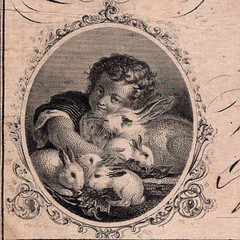 After the American Civil War, Carvalho moved his family to New York City, but cataracts impaired his continuing portrait work, and would ultimately blind him. He became an inventor, and received two patents for steam superheating in 1877 and 1878.
After the American Civil War, Carvalho moved his family to New York City, but cataracts impaired his continuing portrait work, and would ultimately blind him. He became an inventor, and received two patents for steam superheating in 1877 and 1878.
When he was twenty-five years old, Carvalho painted Child with Rabbits, an image of a chubby, angelic boy surrounded by a mother rabbit and her bunnies; this was reproduced on paper money issued by numerous banks in the United States and Canada.
This is a very educational series - while I'm familiar with most of the awardees, I always learn something new about them, and in this case I'd been totally unfamiliar with Carvalho. -Editor
FREIGELD: MONEY THAT EXPIRES
In the Great Depression a number of communities around the U.S. and the world experimented with stamp scrip - notes that required that stamps be affixed for each transaction (or at regular intervals) in order for the scrip to remain valid. This scheme ensured that the notes would continue to circulate like hot potatoes, increasing the velocity of money and benefiting the overall economy. Money of the latter form (expiring without periodic stamping) was promoted by economist Silvio Gesell (1862–1930) and put into practice in 1932.
A new article examines Gesell's "Freigelt" and asks whether "society and the economy would be better off if money was a perishable good." Here's a short excerpt, where I've reordered some paragraphs for readability here. See the complete article online for more.
Found via News & Notes from the Society of Paper Money Collectors (Volume IX, Number 22, November 14, 2023). See also the articles linked below. -Editor
As it evolved, money became increasingly symbolic. Early paper money acted as an IOU and could always be exchanged for metallic coins of various values. In the late 13th century, however, the Mongol emperor Kublai Khan invented paper money that was not backed by anything. It was money because the emperor said it was money. People agreed. In the intervening centuries, money has conjured more fantastic leaps of faith with the invention of the stock market, centralized banking and, recently, cryptocurrencies.
More than a century ago, a wild-eyed, vegetarian, free love-promoting German entrepreneur and self-taught economist named Silvio Gesell proposed a radical reformation of the monetary system as we know it. He wanted to make money that decays over time. Our present money, he explained, is an insufficient means of exchange. A man with a pocketful of money does not possess equivalent wealth as a man with a sack of produce, even if the market agrees the produce is worth the money.
In 1898, the Argentine government embarked on a deflationary policy to try to treat its economic ills. As a result, unemployment rose and uncertainty made people hoard their money. The economy ground to a halt. There was plenty of money to go around, Gesell realized. The problem was, it wasn't going around. He argued that the properties of money — its durability and hoardability — impede its circulation: When confidence exists, there is money in the market; when confidence is wanting, money withdraws.
Those who live by their labor suffer from this imbalance. If I go to the market to sell a bushel of cucumbers when the cost of food is falling, a shopper may not buy them, preferring to buy them next week at a lower price. My cucumbers will not last the week, so I am forced to drop my price. A deflationary spiral may ensue.
Only money that goes out of date like a newspaper, rots like potatoes, rusts like iron, evaporates like ether,
Gesell wrote in his seminal work, The Natural Economic Order,
published in 1915, is capable of standing the test as an instrument for the exchange of potatoes, newspapers, iron and ether.
To achieve this, he invented a form of expiring money called Freigeld, or Free Money. (Free because it would be freed from hoarding and interest.) The theory worked like this: A $100 bill of Freigeld would have 52 dated boxes on the back, where the holder must affix a 10-cent stamp every week for the bill to still be worth $100. If you kept the bill for an entire year, you would have to affix 52 stamps to the back of it — at a cost of $5.20 — for the bill to still be worth $100. Thus, the bill would depreciate 5.2% annually at the expense of its holder(s). (The value of and rate at which to apply the stamps could be fine-tuned if necessary.)
Although many dismissed Gesell as an anarchistic heretic, his ideas were embraced by major economists of the day. In his book The General Theory of Employment, Interest and Money,
John Maynard Keynes devoted five pages to Gesell, calling him a strange and unduly neglected prophet.
He argued the idea behind a stamp scrip was sound. I believe that the future will learn more from the spirit of Gesell than from that of Marx,
Keynes wrote.
To read the complete article, see:
What If Money Expired?
(https://www.noemamag.com/what-if-money-expired/)
Gesell died in 1930, but that year a group called the Wära Exchange Association was created to put his ideas into practice. -Editor
 The "Miracle of Wörgl," refers to the story of currency demurrage and the impact it had on the economy of Wörgl, a small town in Austria. For a bill of such currency to retain its face value, the currency holder must pay a regular, periodic payment (a tax) for a stamp or other marking. Wörgl is regularly touted by advocates of demurrage as a successful implementation of such a currency, one designed to encourage velocity due to the incentive to spend it in order to avoid the periodic tax.
The "Miracle of Wörgl," refers to the story of currency demurrage and the impact it had on the economy of Wörgl, a small town in Austria. For a bill of such currency to retain its face value, the currency holder must pay a regular, periodic payment (a tax) for a stamp or other marking. Wörgl is regularly touted by advocates of demurrage as a successful implementation of such a currency, one designed to encourage velocity due to the incentive to spend it in order to avoid the periodic tax.
The experiment at Wörgl was implemented by the town's mayor, Michael Unterguggenberger in the midst of the Great Depression. Wörgl, like many towns throughout the world at the time, was suffering from high unemployment and low economic activity. The experiment began on the 31st of July 1932, with the issuing of "Certified Compensation Bills," a form of currency commonly known as Stamp Scrip, or Freigeld. It resulted in a boom in government projects, and a corresponding increase in employment and economic activity not just in the government sector, but throughout the town.
Despite its apparent success, and despite attracting the attention of luminaries such as French Premier Edouard Daladier and the economist Irving Fisher, the "experiment" was terminated by the Austrian National Bank on September 1, 1933.
For more information, see:
The 'Strange, Unduly Neglected Prophet'
(https://www.npr.org/sections/money/2019/08/27/754323652/the-strange-unduly-neglected-prophet)
The Year of the Freigeld in Wörgl
(https://coinsweekly.com/the-year-of-the-freigeld-in-woergl/)
Unterguggenberger Institut
(https://unterguggenberger.org/)
STAMP SCRIP IN THE GREAT DEPRESSION:
LESSONS FOR COMMUNITY CURRENCY FOR TODAY?
(https://ijccr.files.wordpress.com/2012/05/ijccrvol142010a29-45warner.pdf)
To read earlier E-Sylum articles, see:
STAMP SCRIP IN THE GREAT DEPRESSION
(https://www.coinbooks.org/v20/esylum_v20n21a27.html)
SILVIO GESELL'S MONEY WITH AN EXPIRATION DATE
(https://www.coinbooks.org/v22/esylum_v22n35a16.html)
THE CASHLESS CONSPIRACY DISTRACTION
Here's an interesting discussion on the march to a cashless society and the fearmongering around it coming from both the right and the left. Can't we all just get along? And focus on a common goal? Brett Scott is the author of Cloudmoney: Why the War on Cash Endangers Our Freedom (2022) -Editor
 Four centuries ago, a woman named Else Knutsdatter was executed in Vardø, a small coastal town in Norway. She was accused of having used witchcraft to raise an ocean storm that claimed the lives of 40 men. She wasn't the only one to fall victim to 17th-century folk who – in the absence of other explanations – could be convinced that disasters were conjured by malevolent sorcerers. Ninety others were executed for conspiring to produce the same storm.
Four centuries ago, a woman named Else Knutsdatter was executed in Vardø, a small coastal town in Norway. She was accused of having used witchcraft to raise an ocean storm that claimed the lives of 40 men. She wasn't the only one to fall victim to 17th-century folk who – in the absence of other explanations – could be convinced that disasters were conjured by malevolent sorcerers. Ninety others were executed for conspiring to produce the same storm.
Today, we know that physics and atmospheric pressures produced those storms. So, in the realm of weather, we've moved to systemic thinking, where bad things don't need to be explained with reference to bad actors. When it comes to descriptions of politics and economics, the progress is not so unequivocal. Do bad things like climate change, conflict and corporate greed happen because powerful politicians and CEOs construct it like that, or do they emerge in the vacuum of human agency, in the fact that nobody's actually in control? This is a question that confronts me in the campaign to protect the physical cash system against the digital takeover by Big Finance and Big Tech.
In 2015, I was one of the few people raising awareness of the dangers of cashless society from a Left-wing perspective. Then the pandemic hit, and a new generation of pro-cash activism emerged in the so-called populist Right. Libertarians seized upon early COVID-19 controls as evidence of a new era in totalitarianism. Social conservatives had already cast Big Tech firms as hives of ‘wokeness'. Conservative commentators began to weave these perspectives together. They presented themselves as rebellious champions protecting the everyman from an alliance of liberal corporate elites and authoritarian socialist governments.
It's an example of a trend in our post-pandemic moment, where the meeting of two sides of the political horseshoe has led to the spread of Right-wing ideas among people who previously considered themselves Leftists. The new Right has appropriated the rebellious language of Left-wing hacker culture, which pushed digital privacy for decades.
Cashless society authentically sucks. It's a world where your kid cannot sell lemonade on the side of the road without paying Mastercard executives in New York.
The dominant tendencies in capitalism pull upon all of us but it's possible to demand space for other values. It's been done before. There was a time when the automobile industry seemed ascendant, and bikes were pushed off the roads, but we built a cultural movement to demand bicycle lanes. That's why we should see cash as being like the public bicycle of payments, and support efforts across the political spectrum to protect and promote it. Digital bank systems are the private Uber of payments: they may appear convenient, but total Uberisation unleashes demons that cash historically kept in check – surveillance, censorship, digital exclusion, and serious resilience and financial stability problems. The point isn't to argue that everyone must always use the ‘bicycle'. It's to ensure that we don't get totally ‘Uberised' in private and public life. We need to promote a healthy balance of power between different forms of money in the system, and that's within our collective political abilities.
To read the complete article, see:
Cashless sucks
(https://aeon.co/essays/going-cashless-is-a-bad-idea-but-its-not-a-conspiracy)
NFL THANKSGIVING COIN-TOSS KERFUFFLE
Twenty-five years ago, a coin-toss controversy made for one of the wildest Thanksgiving Days in NFL history. -Editor
Tens of millions were watching 25 years ago, on what may have been the most memorably weird, confusing and simply thrilling day of Thanksgiving games in the NFL's history. On Nov. 26, 1998, the Lions beat the Pittsburgh Steelers, 19-16, in overtime in a game that included a coin flip that was botched to such a degree that it earned an eternal spot in blooper reels, prompted amateur sleuths to enhance the television audio to get to the bottom of the fiasco, forced the NFL to enact an immediate rule change and, quite possibly, caused the Steelers' season to go kaput.
At the time, the NFL mandated that the captain of the visiting team call heads or tails while the coin was in the air. Phil Luckett was the NFL referee for the game, and he turned to Bettis, one of the Steelers' captains at midfield for the overtime coin flip, and told him to call it in the air. On television, the word, "tails" can be heard. But then Luckett said, "Heads is the call. He said heads. It is a tails."
Charlie Batch, former Detroit Lions quarterback (also a Pittsburgh-area native who later played for the Steelers): We're sitting there and Robert Porcher and Ray Roberts go out for the coin flip, and you see Jerome and Carnell walking out. At that point, as the coin drops, you see the reaction from Jerome and Carnell, and what the heck just happened at the coin flip?
Jerome Bettis, former Pittsburgh Steelers running back: I called the coin flip at the beginning of the game and I called heads. And so in overtime, I was going to call heads. I went to say heads and I said, "Huh-tails." I was trying to change from heads to tails. But when the ref heard me say, "Huh," he said I said heads. He didn't hear me all the way through. I always called heads every game, but it was OT, so I wanted to call tails. I said, what are you talking about; even the Lions players were like, "Whoa!" I called tails.
Lake: I was standing right there, Jerome said tails. He may have double clutched the tails, I'll give people that. But he did say tails. I briefly looked over at the Detroit players, I said, you guys know what he called, too.
Batch: Our two captains run off with big smiles on their faces. We got the ball. Why [are] Jerome and Carnell arguing and now Cowher started walking on the field arguing with the referee? We don't know what the hell just happened, but we got the ball. Porcher said let's just go down and score and get the hell out of here.
The NFL changed its procedure immediately, mandating that the referee ask the visiting team captain to call heads or tails before the coin is flipped and for the back judge and field judge to remain at midfield for the toss -- giving everyone the opportunity to make sure they hear the call correctly, and that there are multiple witnesses.
To read the complete article, see:
Twenty-five years ago, a surreal coin-toss controversy and a jaw-dropping Randy Moss performance made for one of the wildest Turkey Days in NFL history.
(https://www.nfl.com/news/sidelines/remembering-coin-toss-randy-moss-and-wild-thanksgiving-1998)


